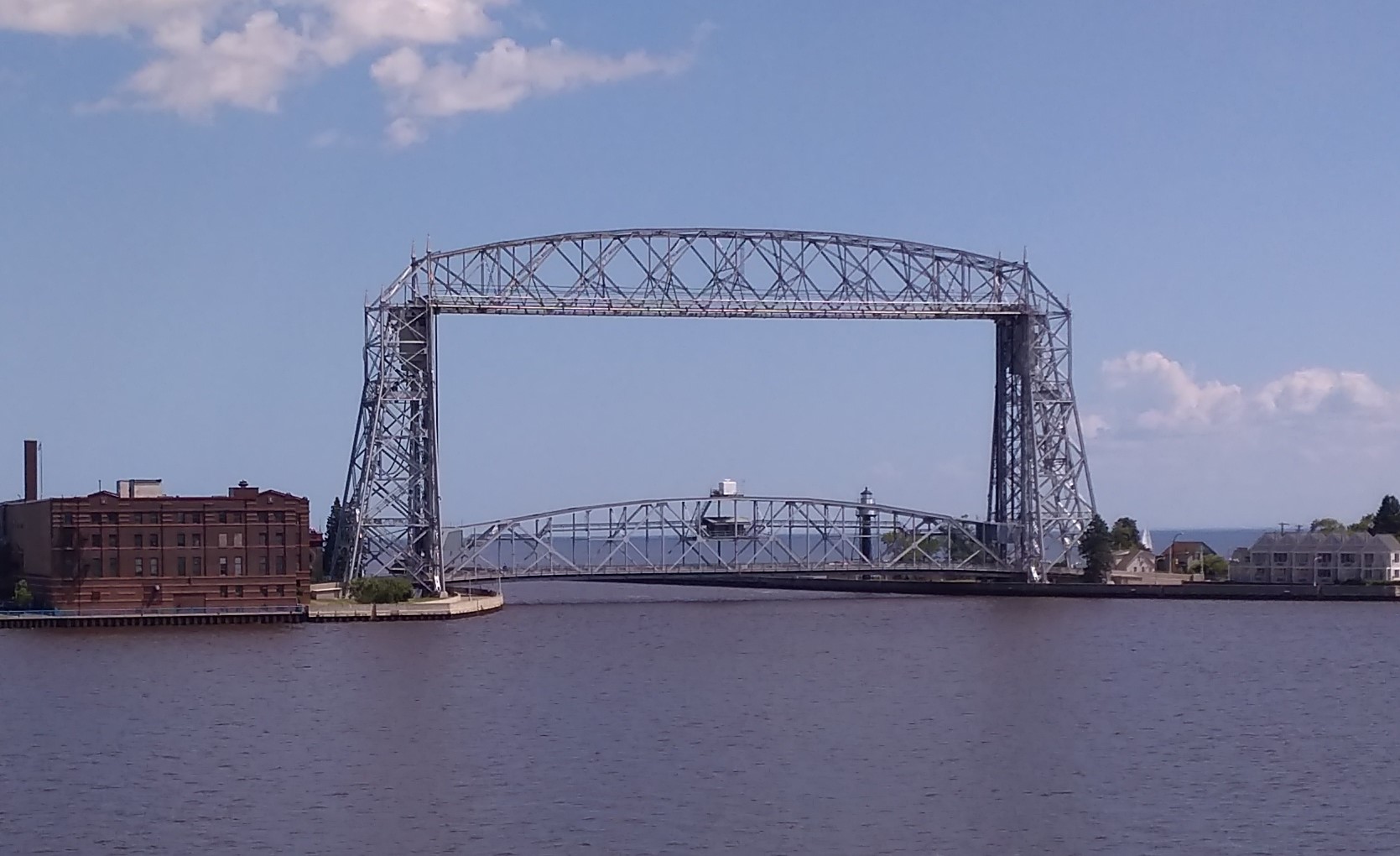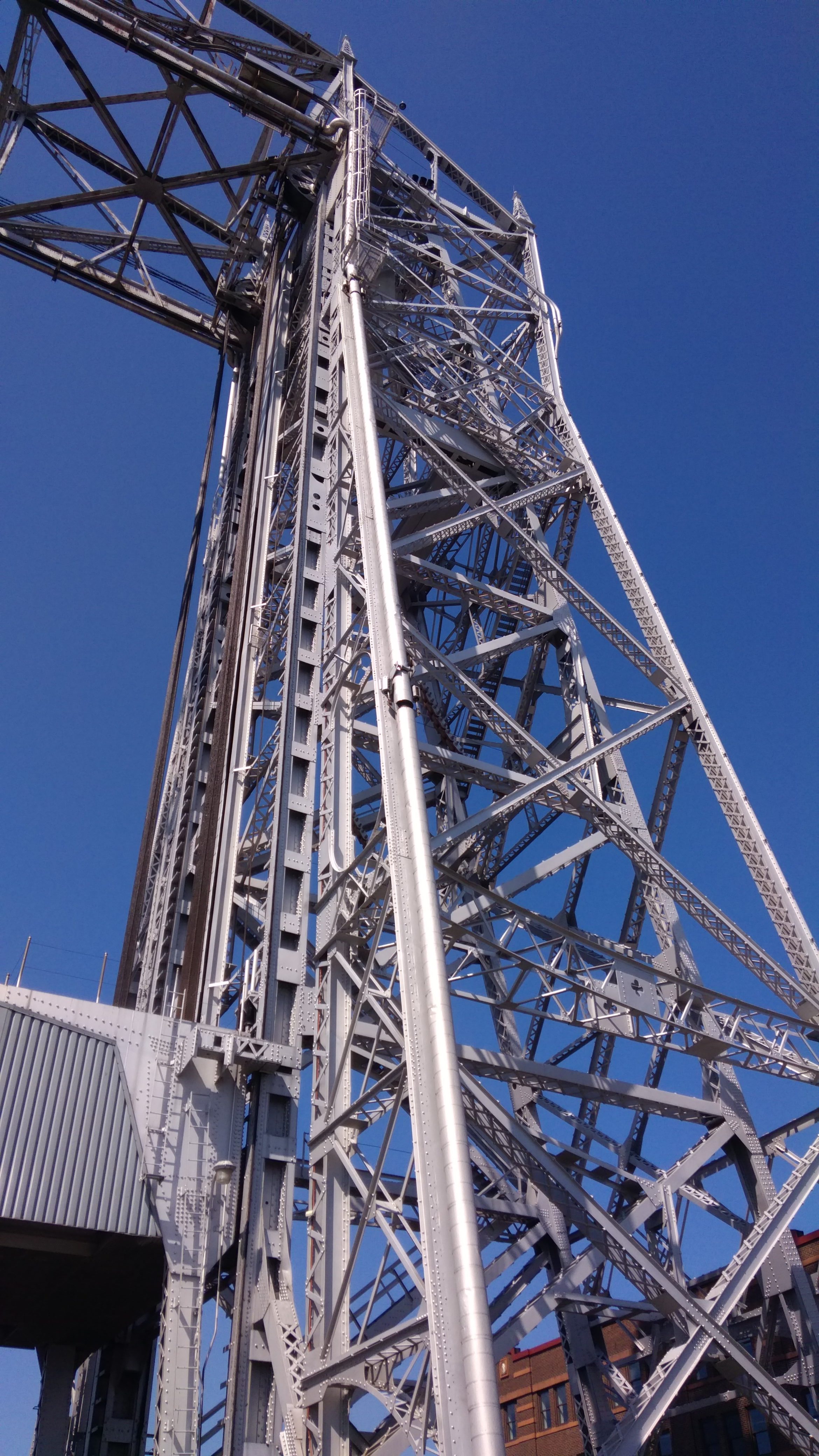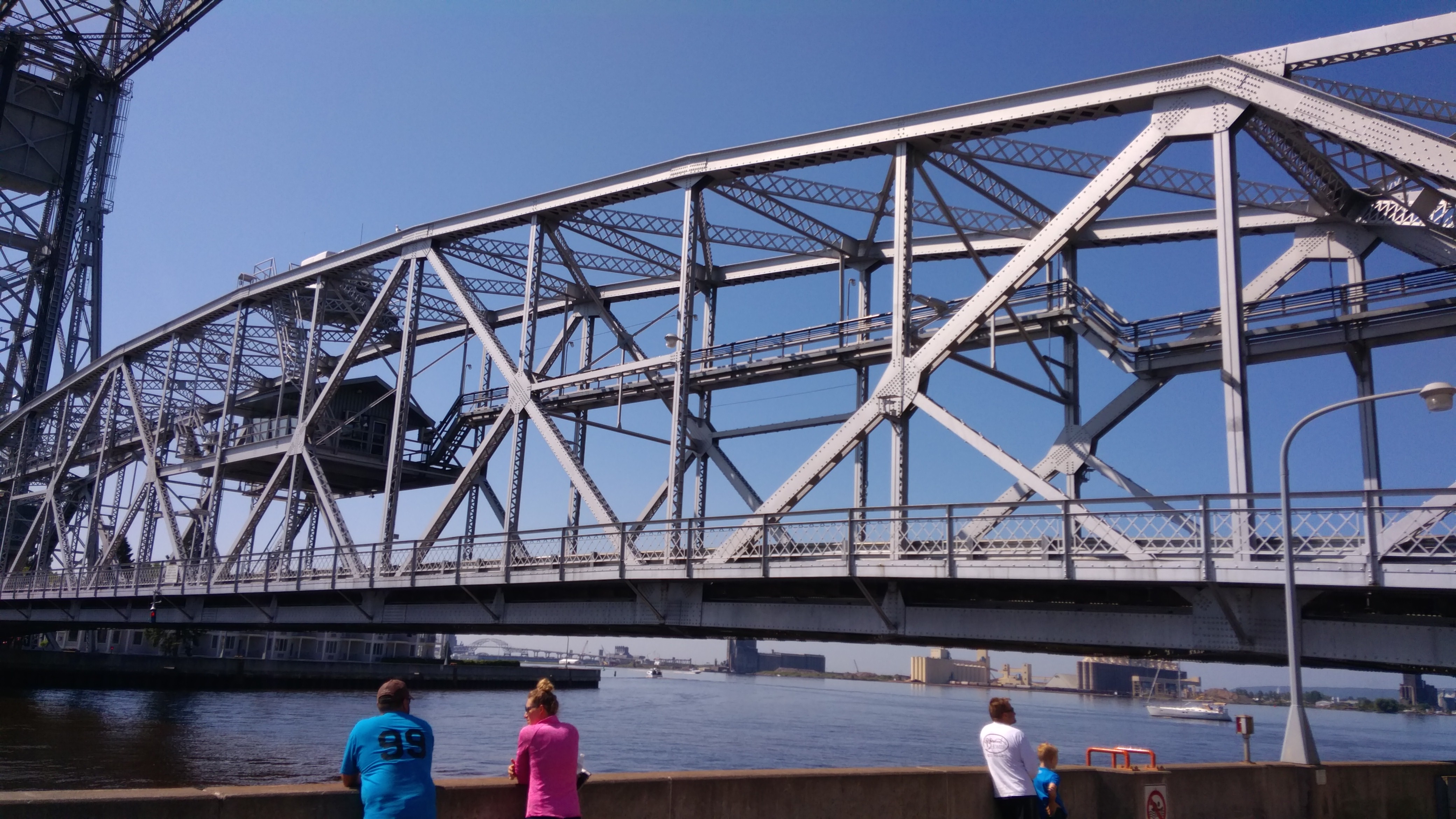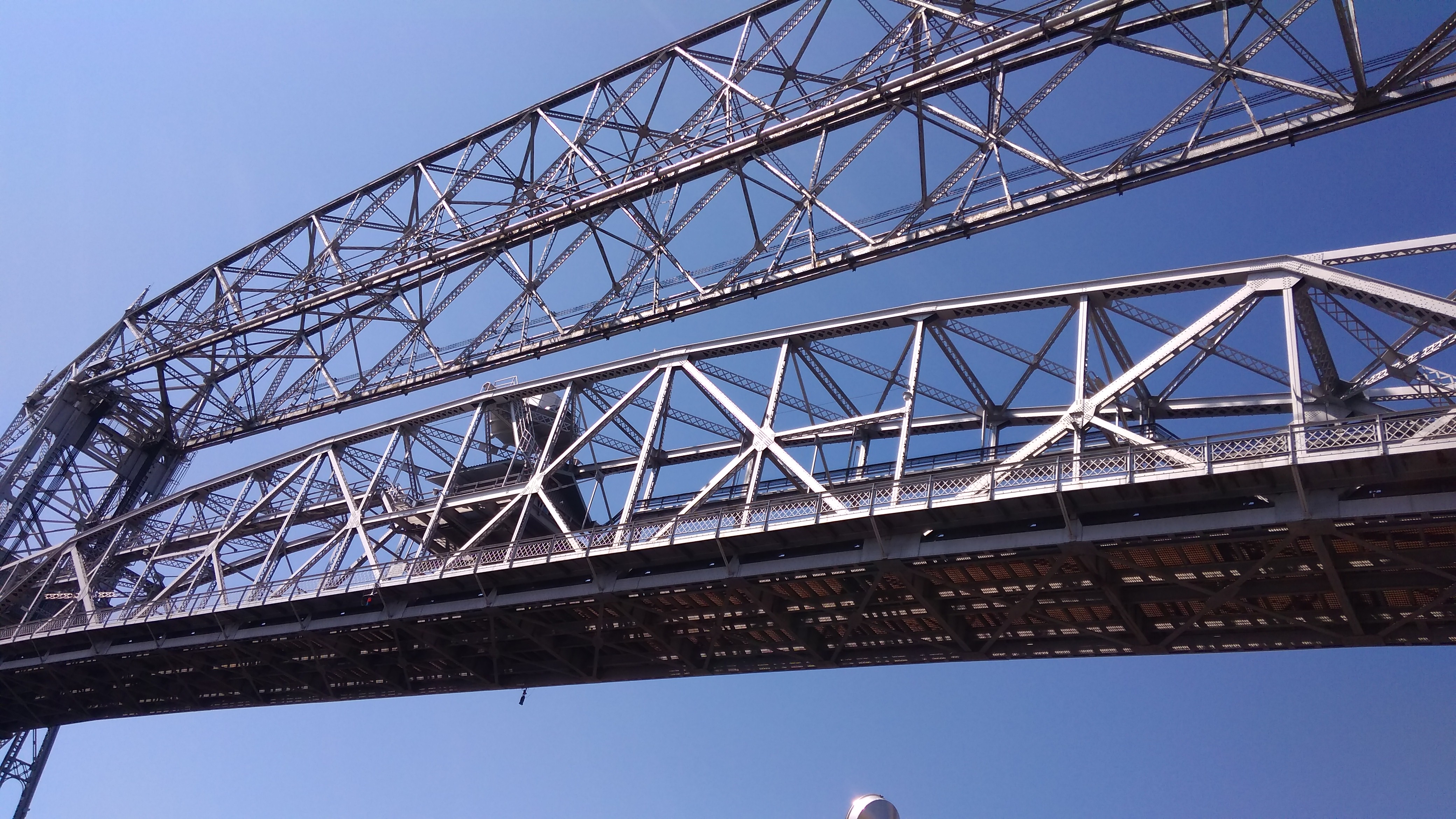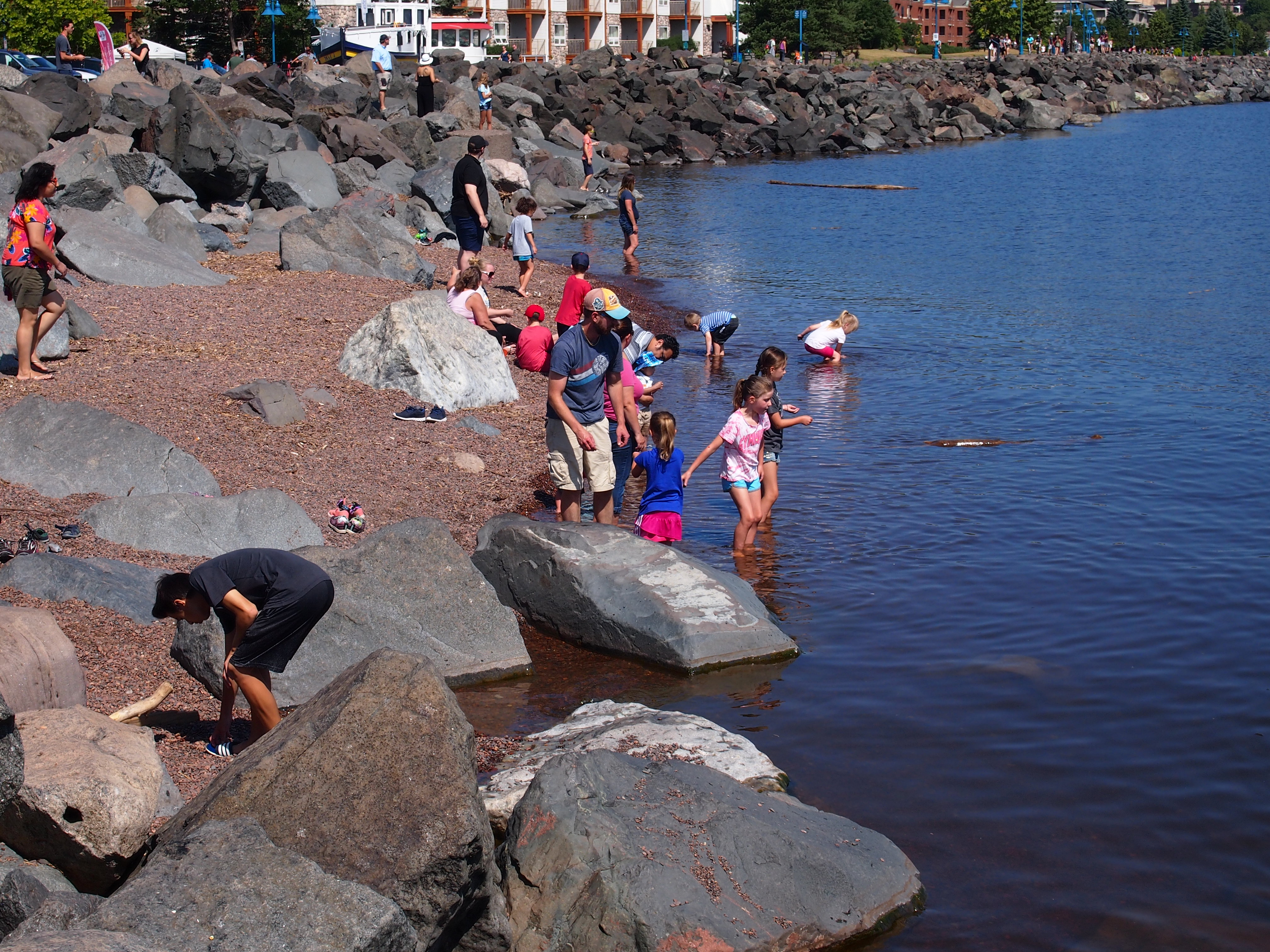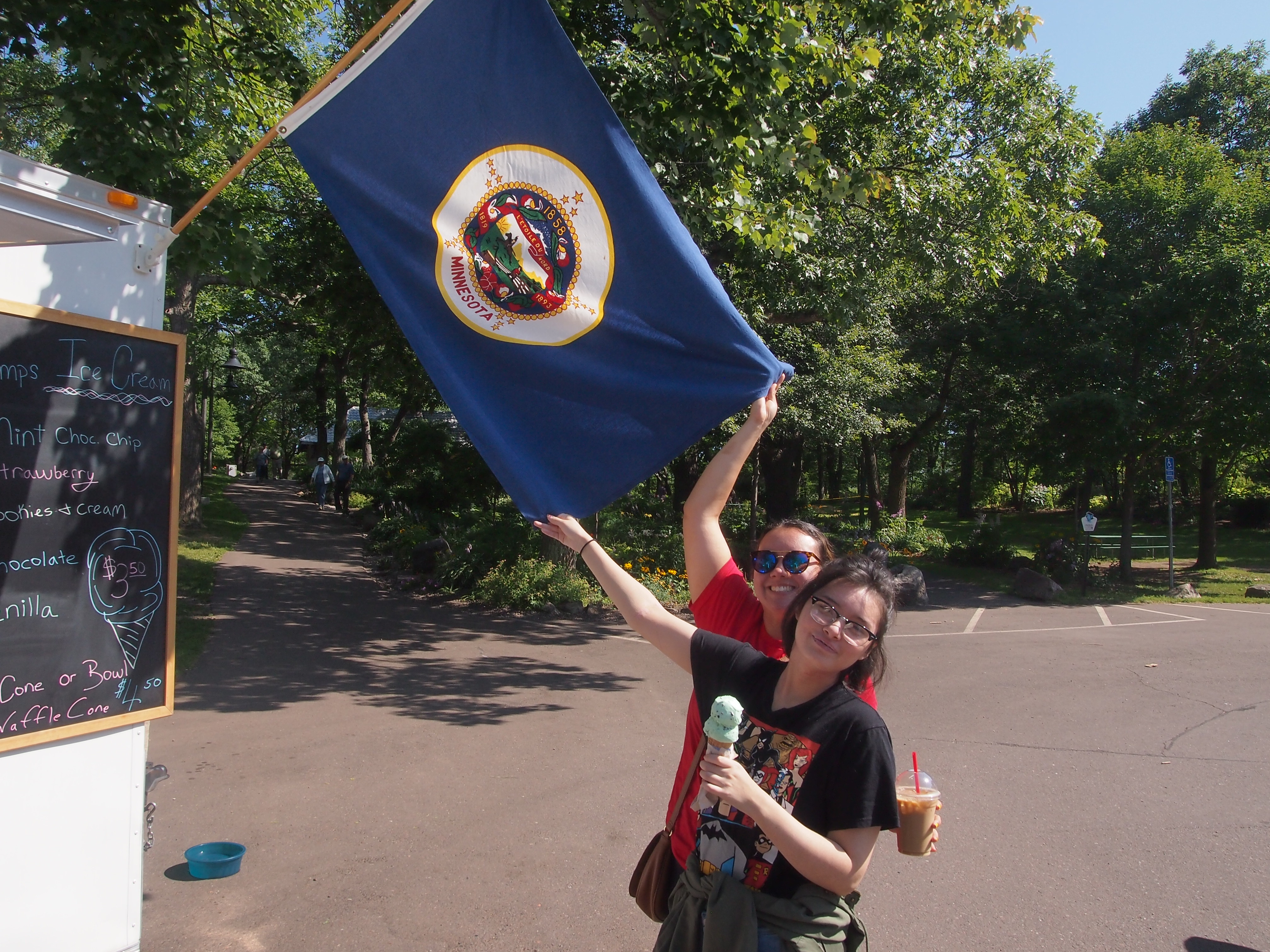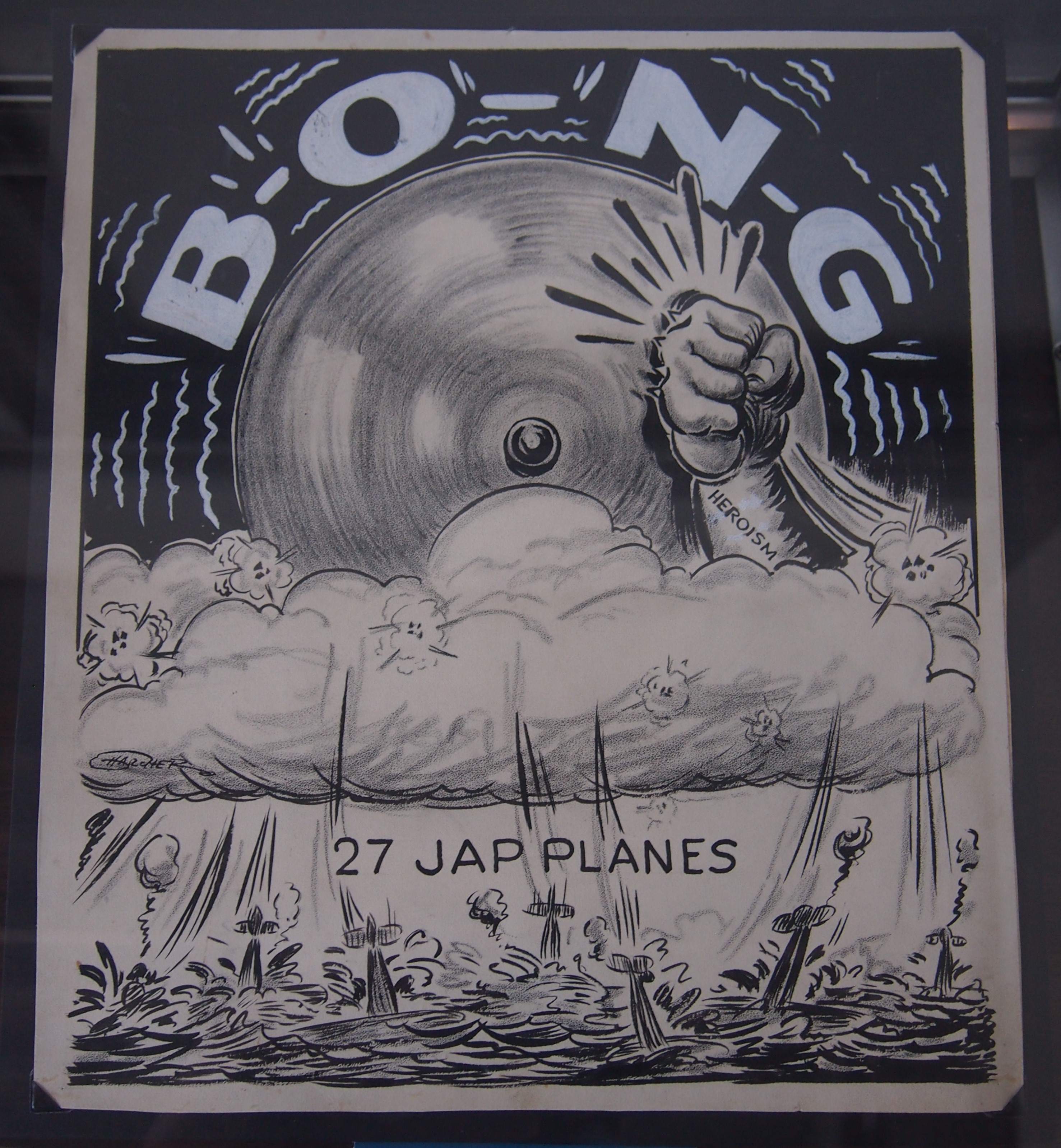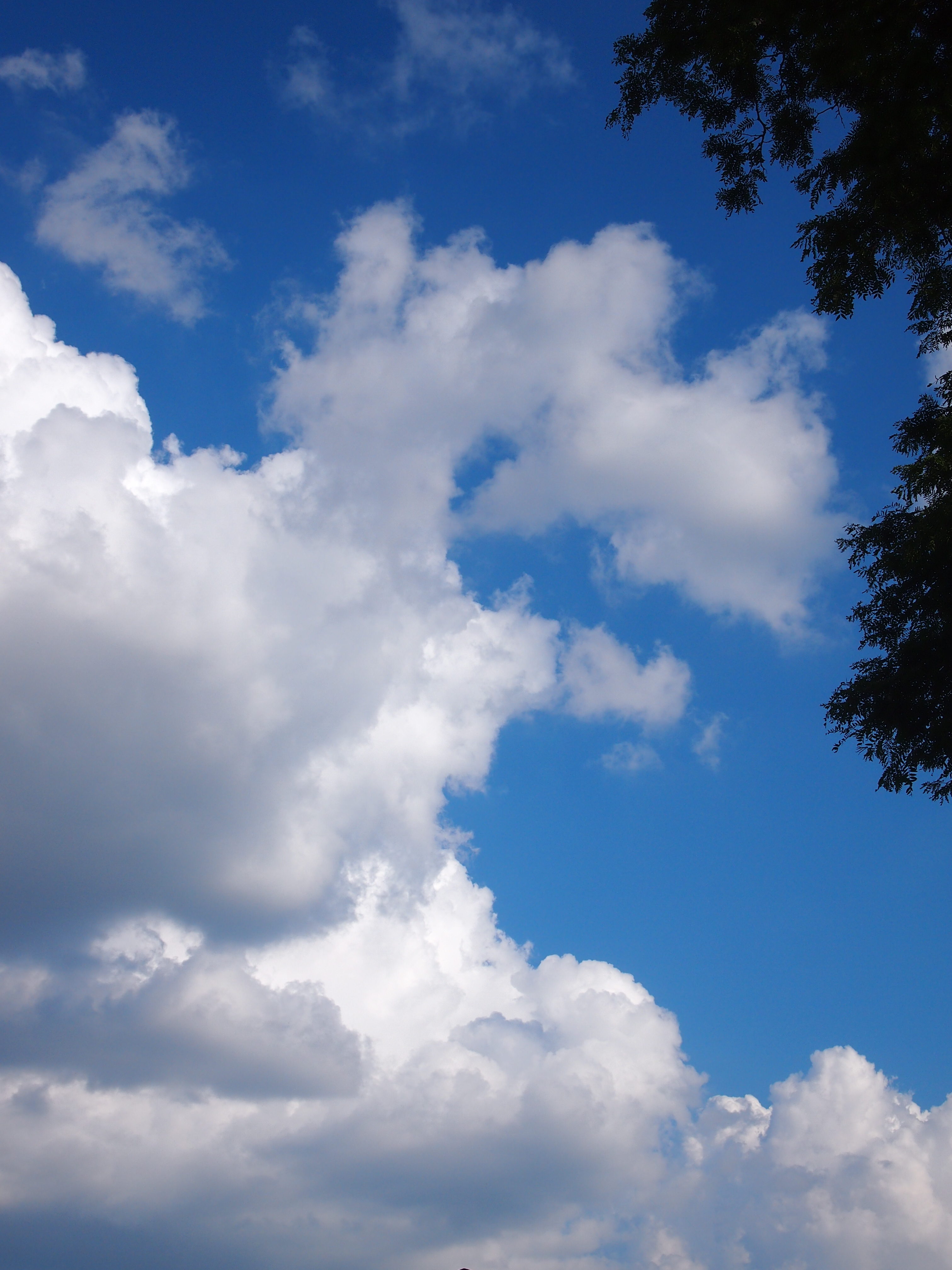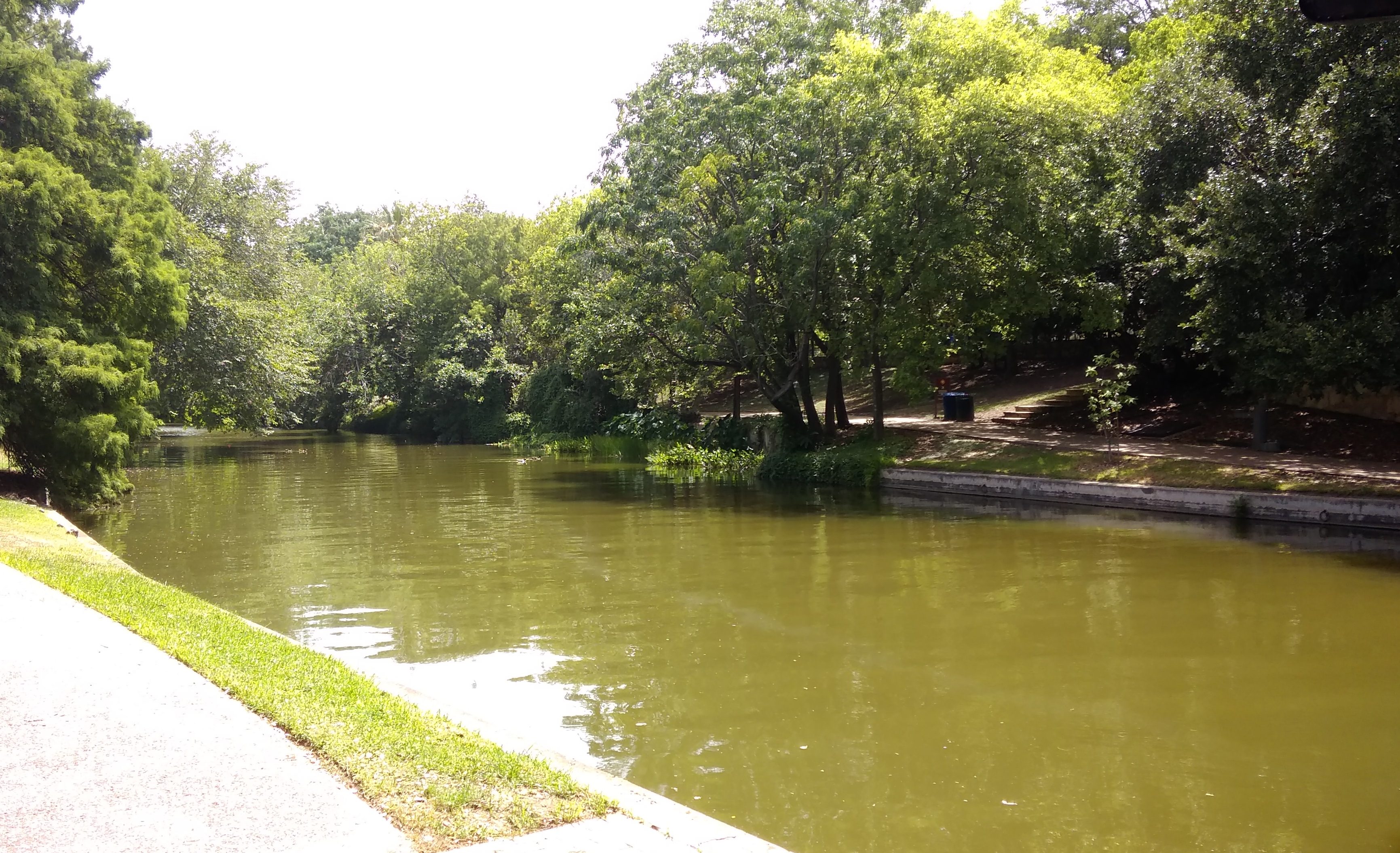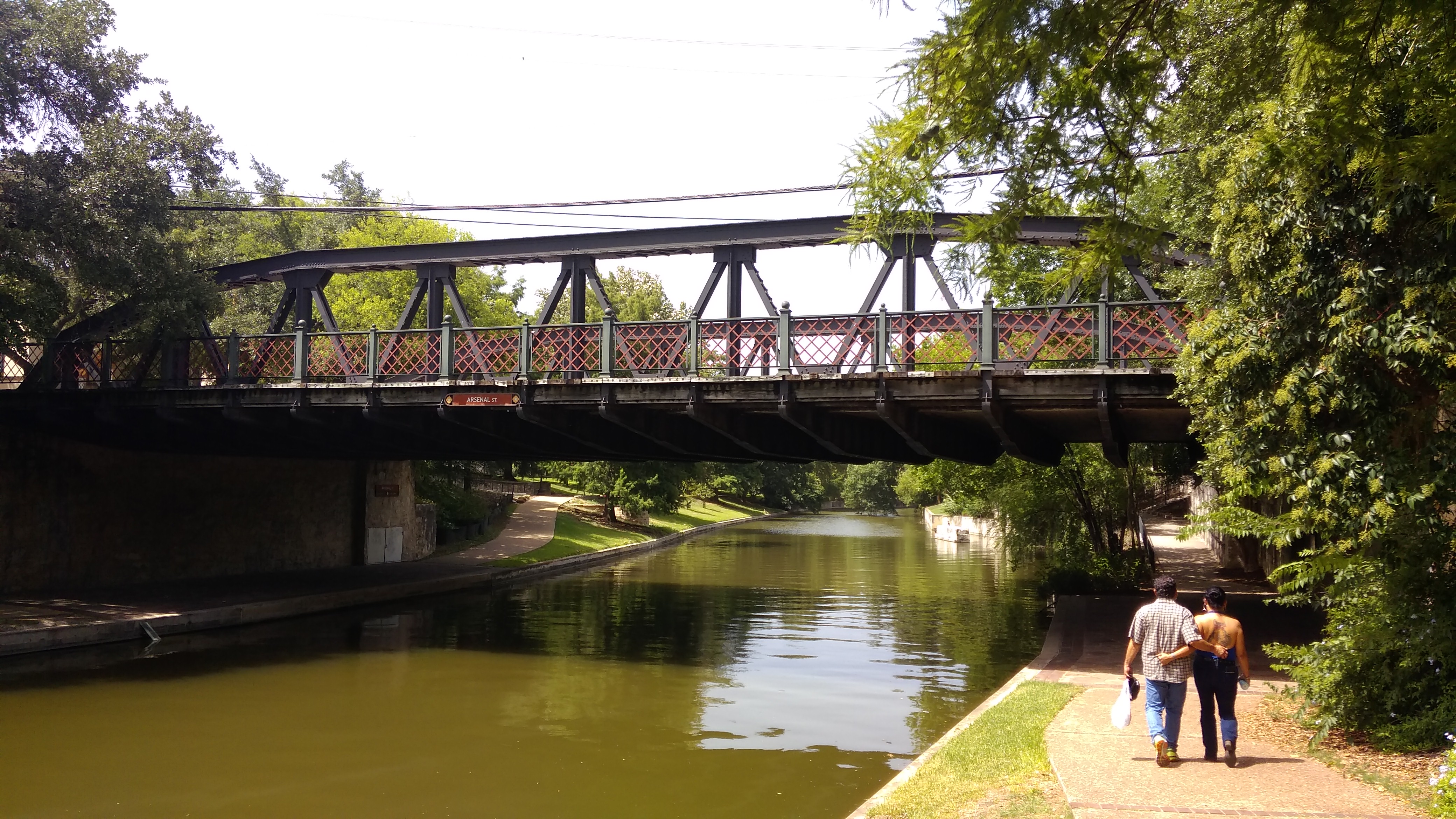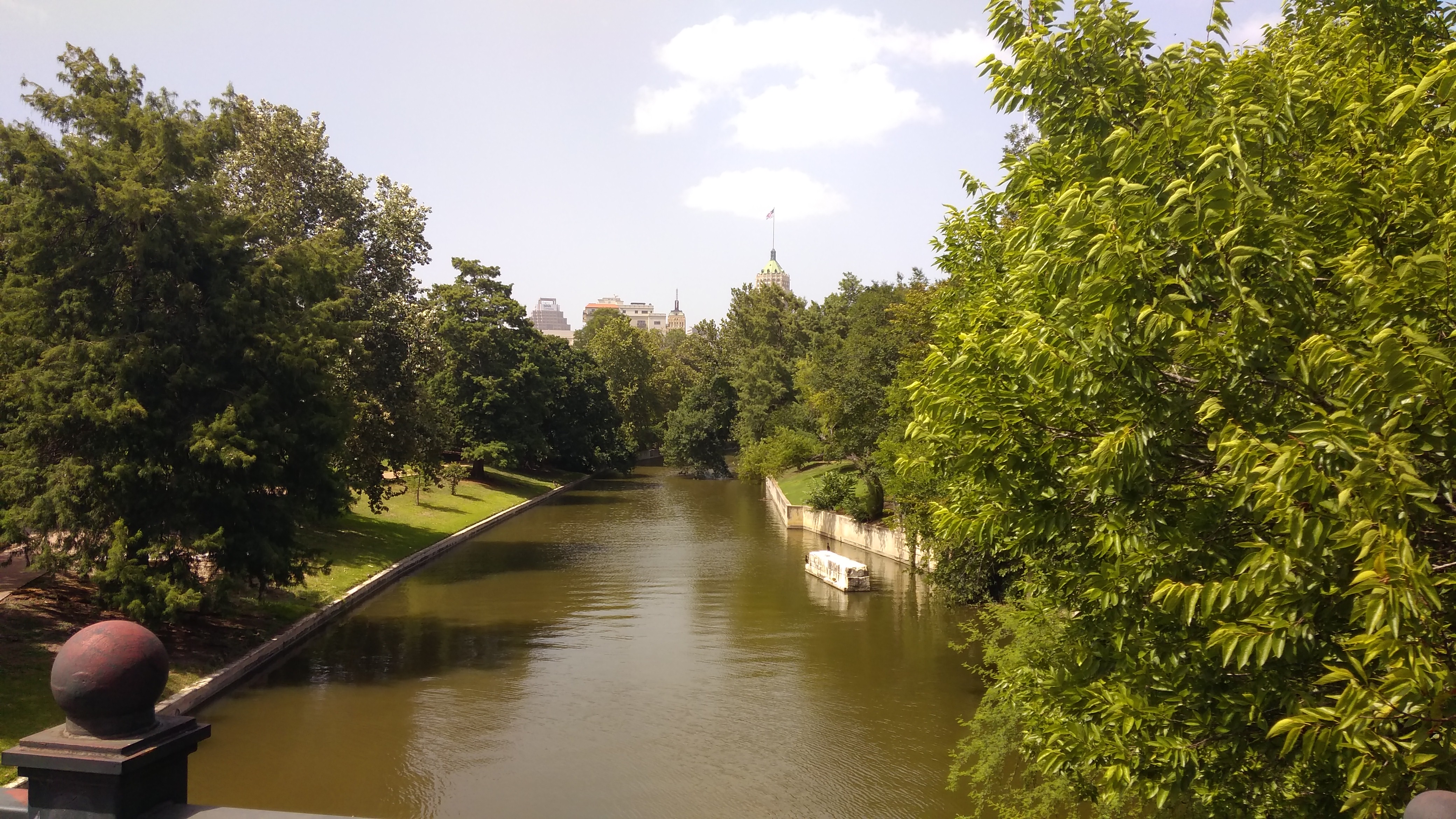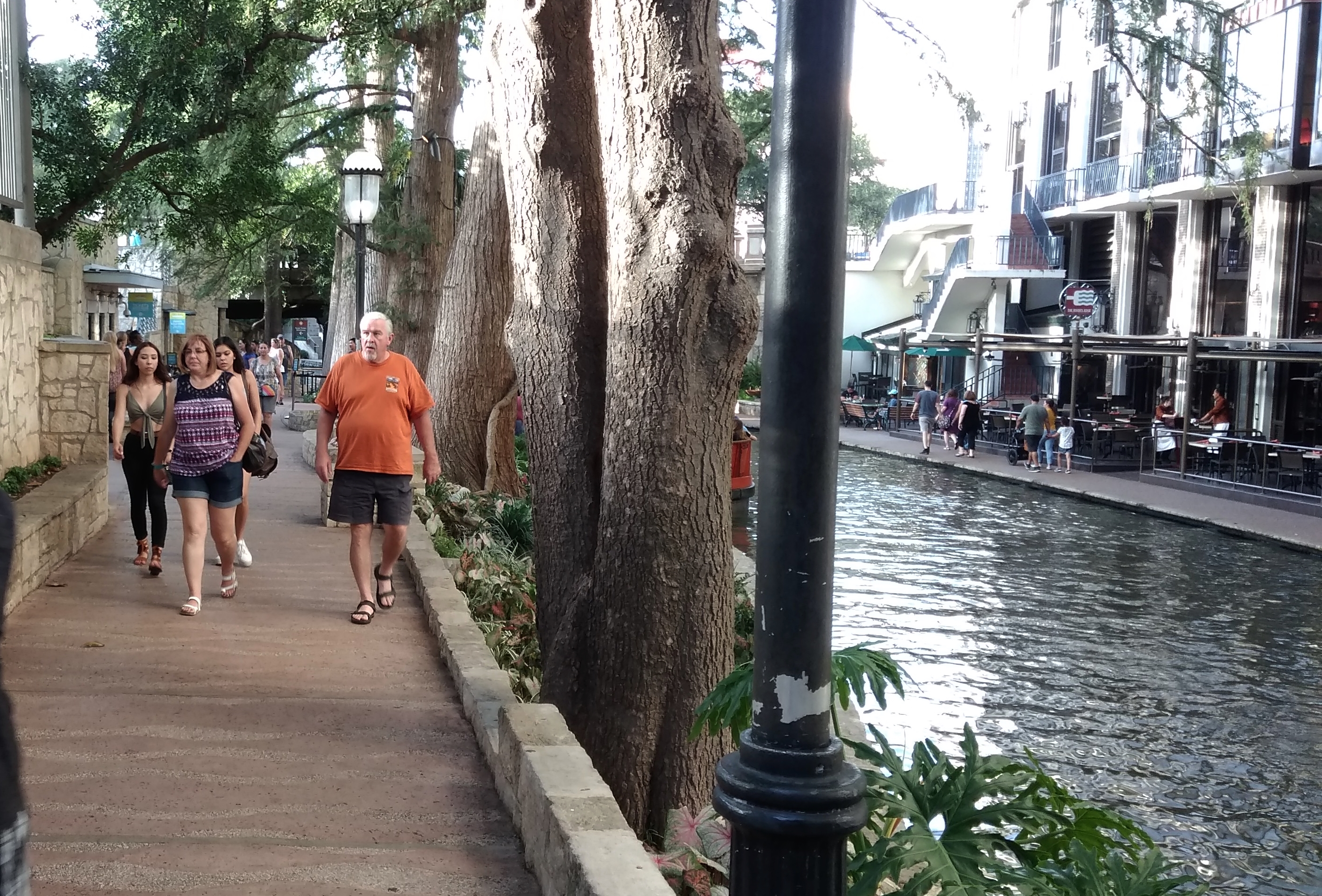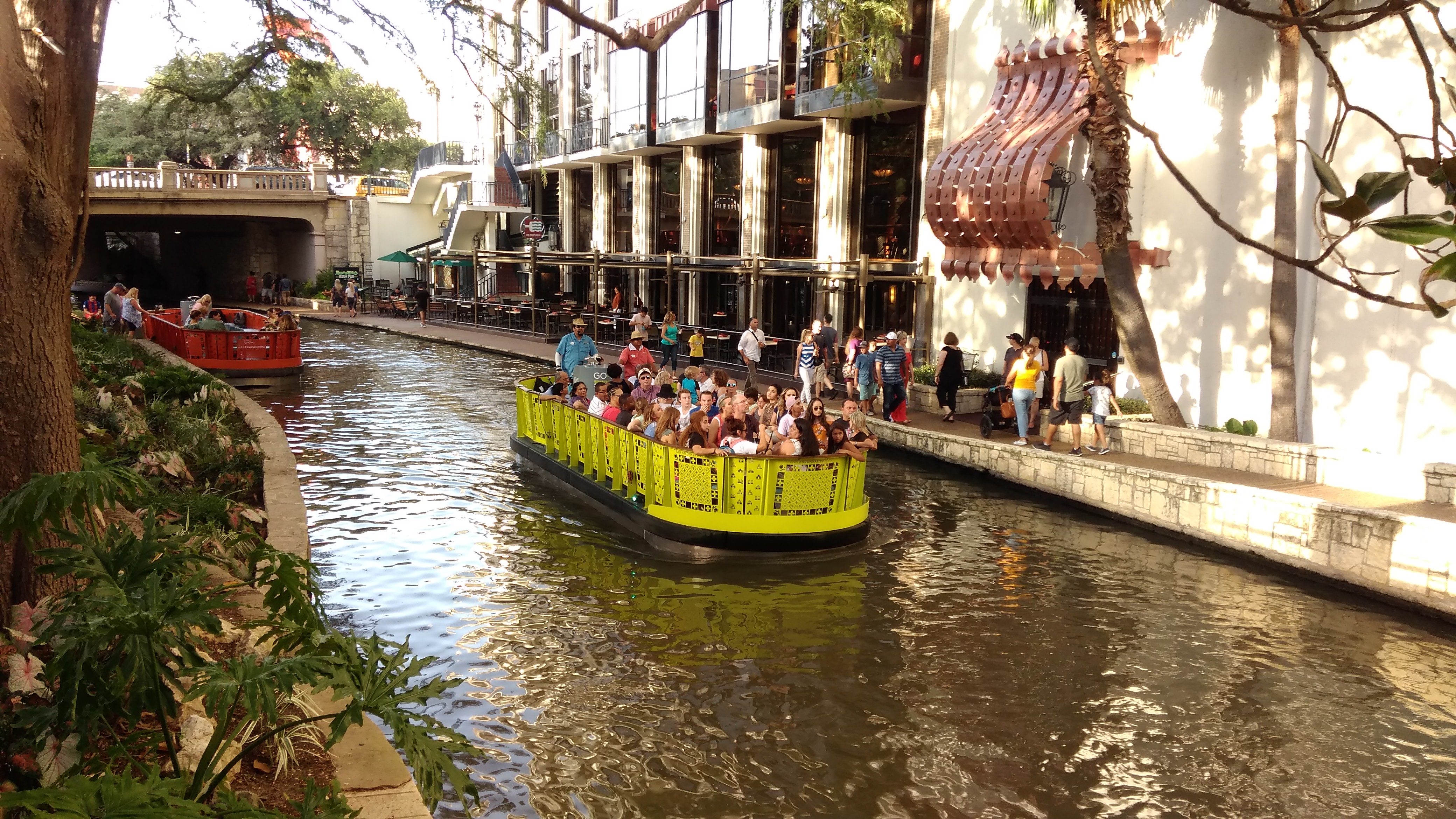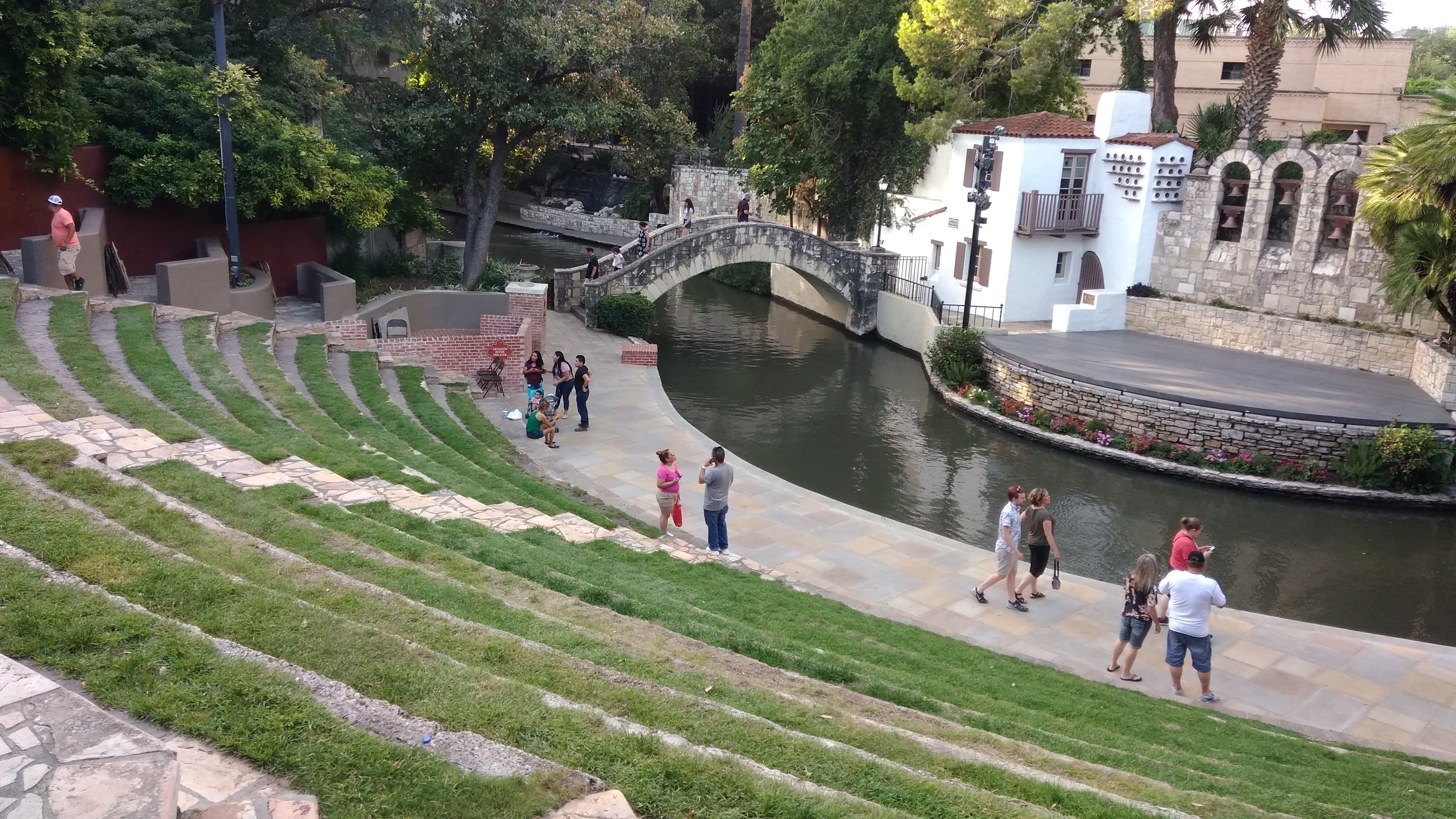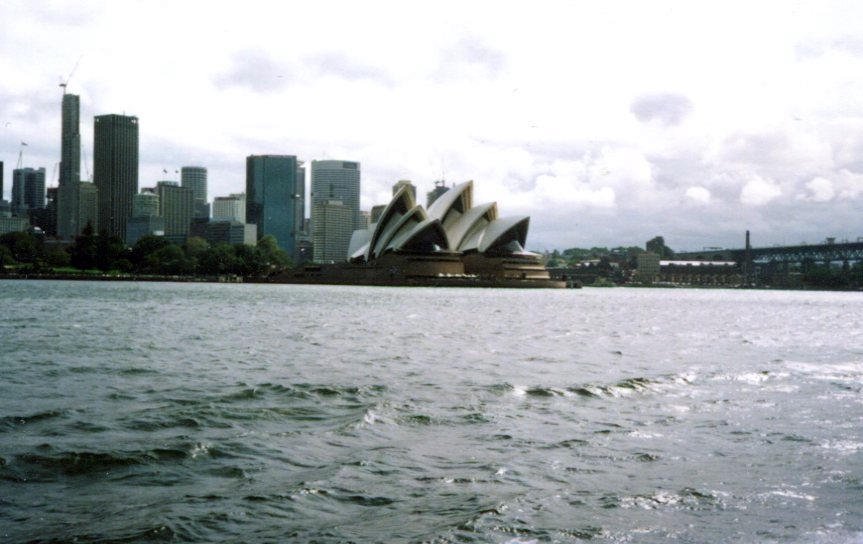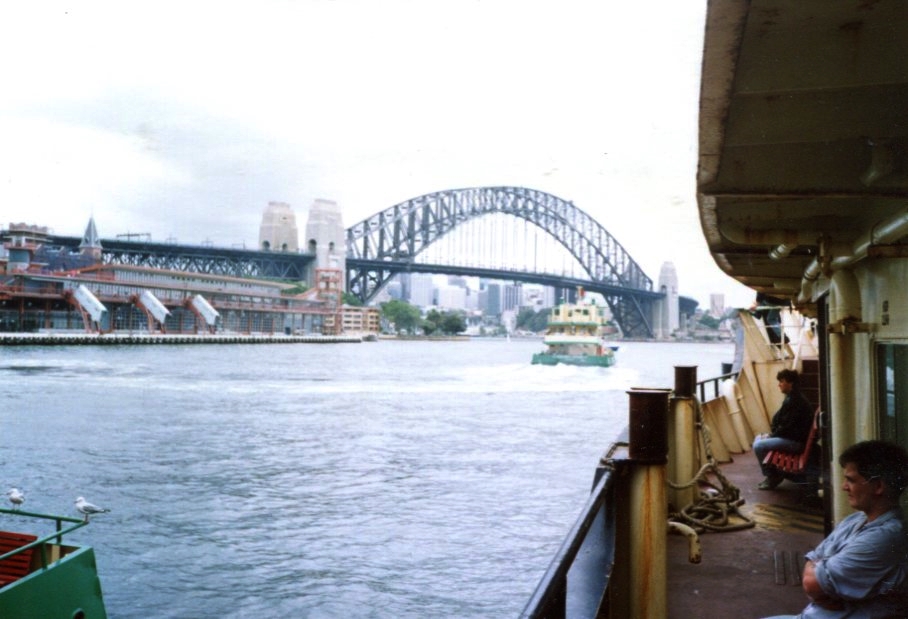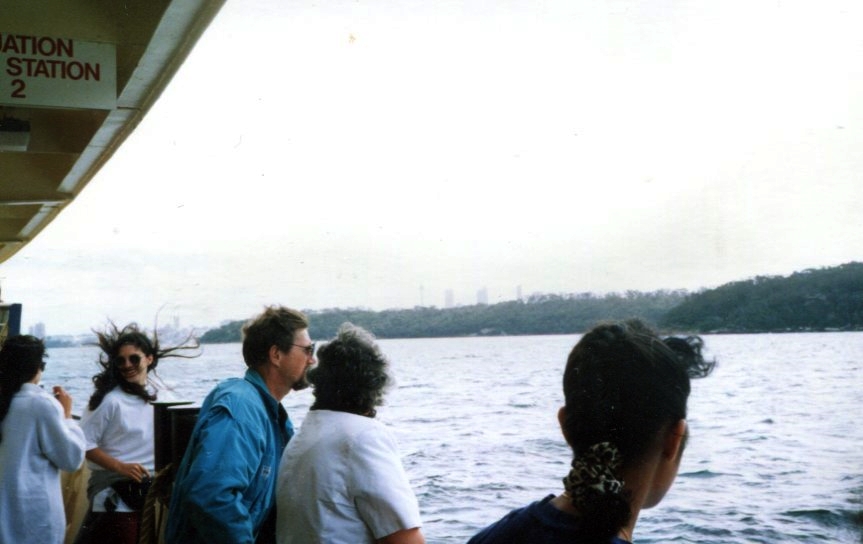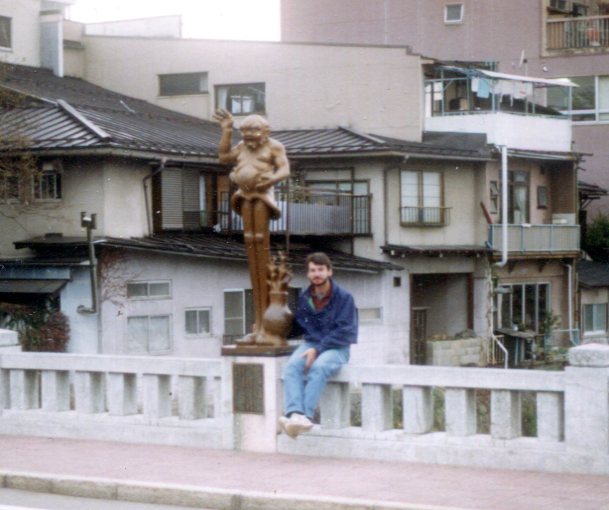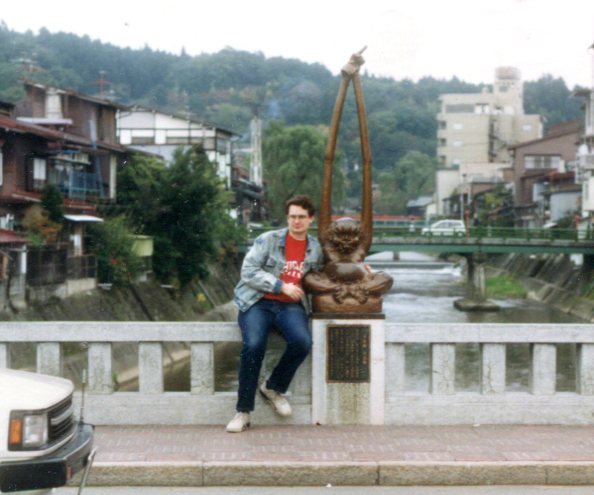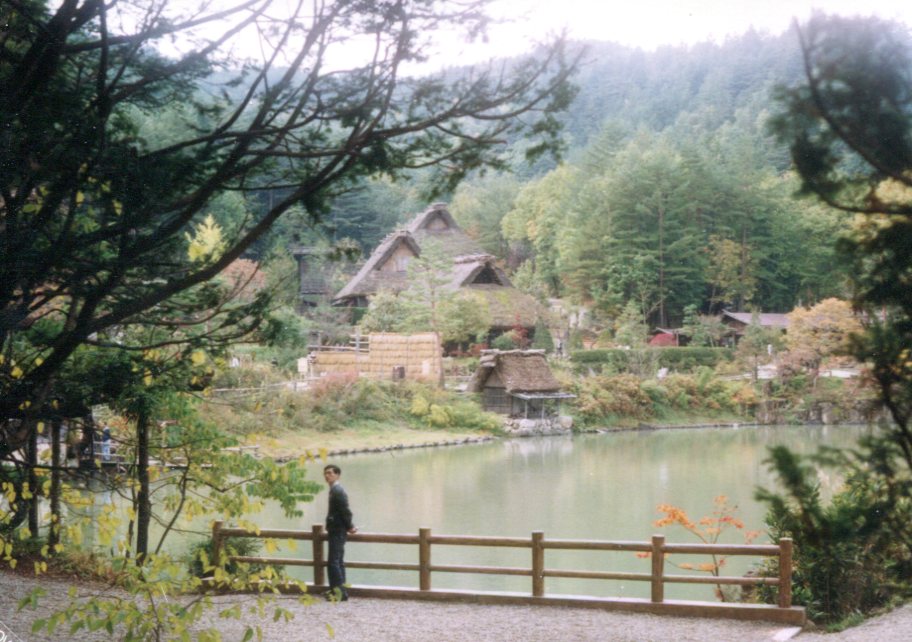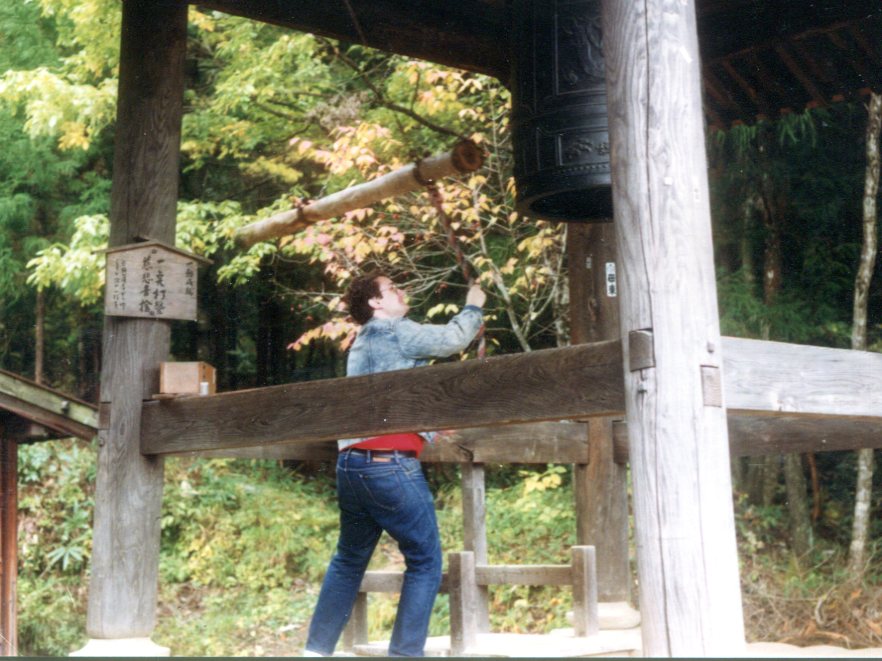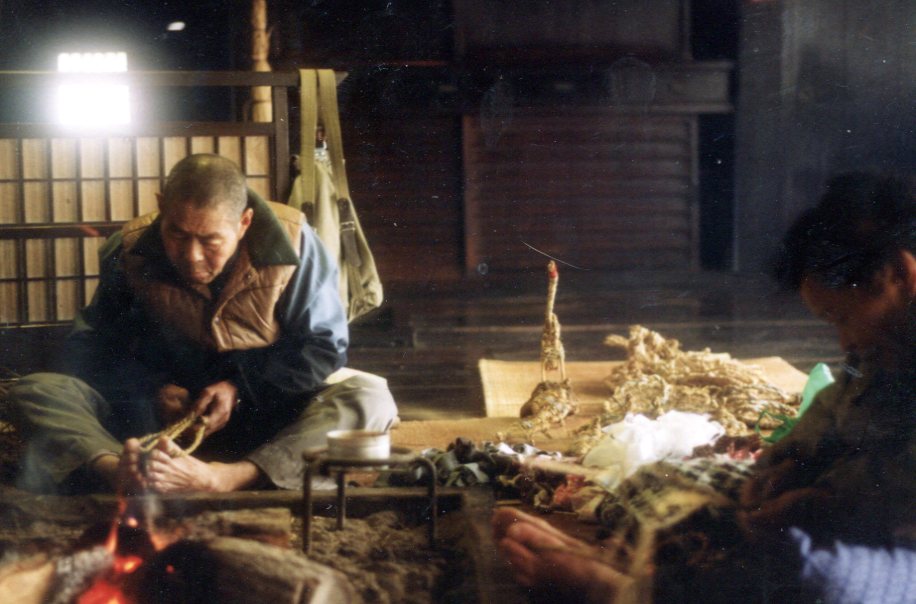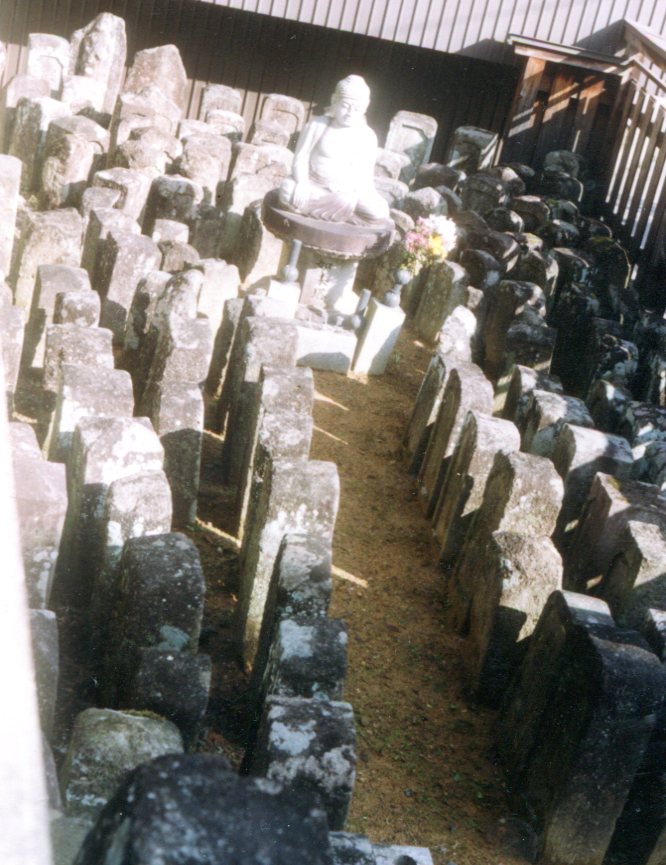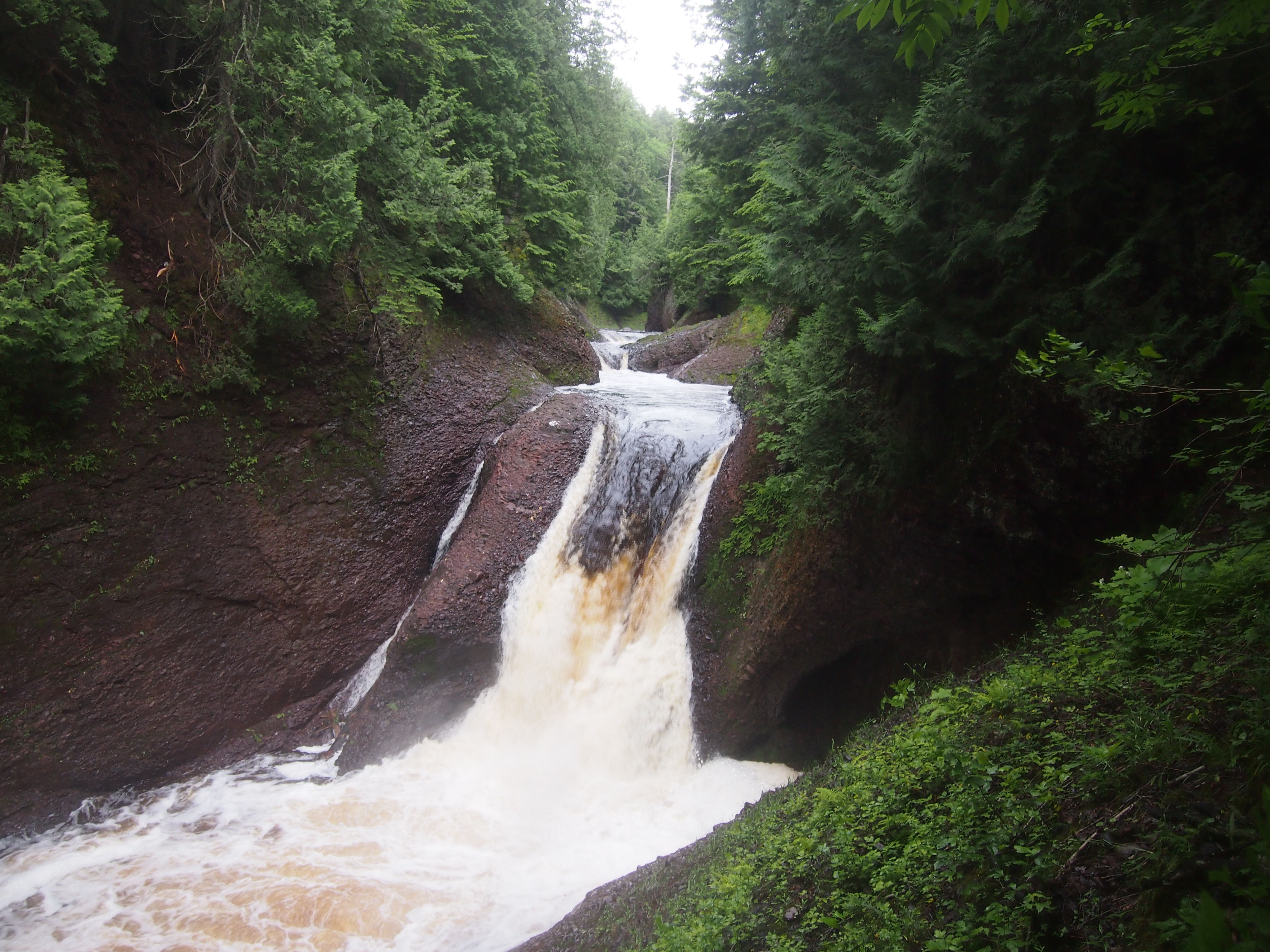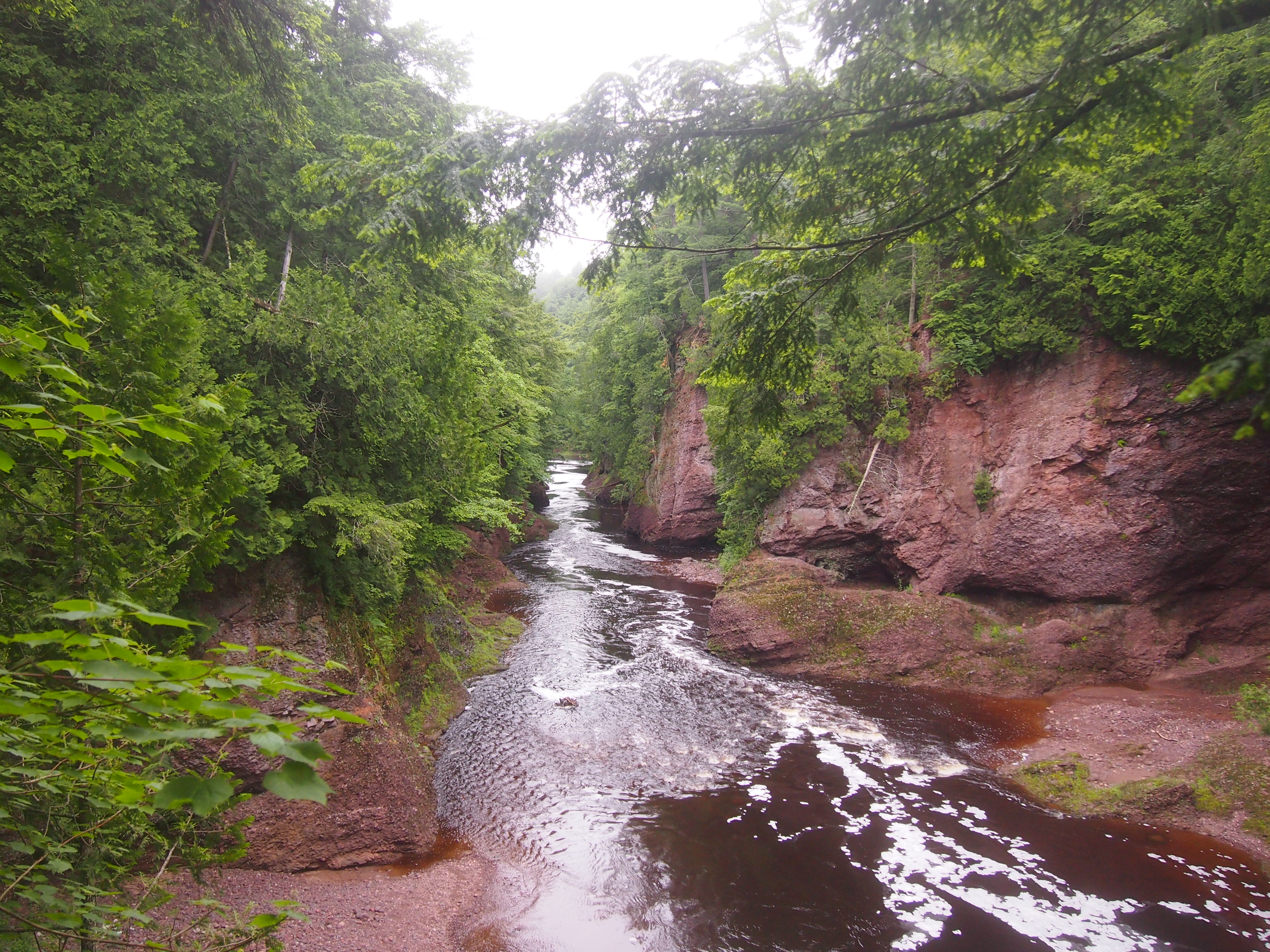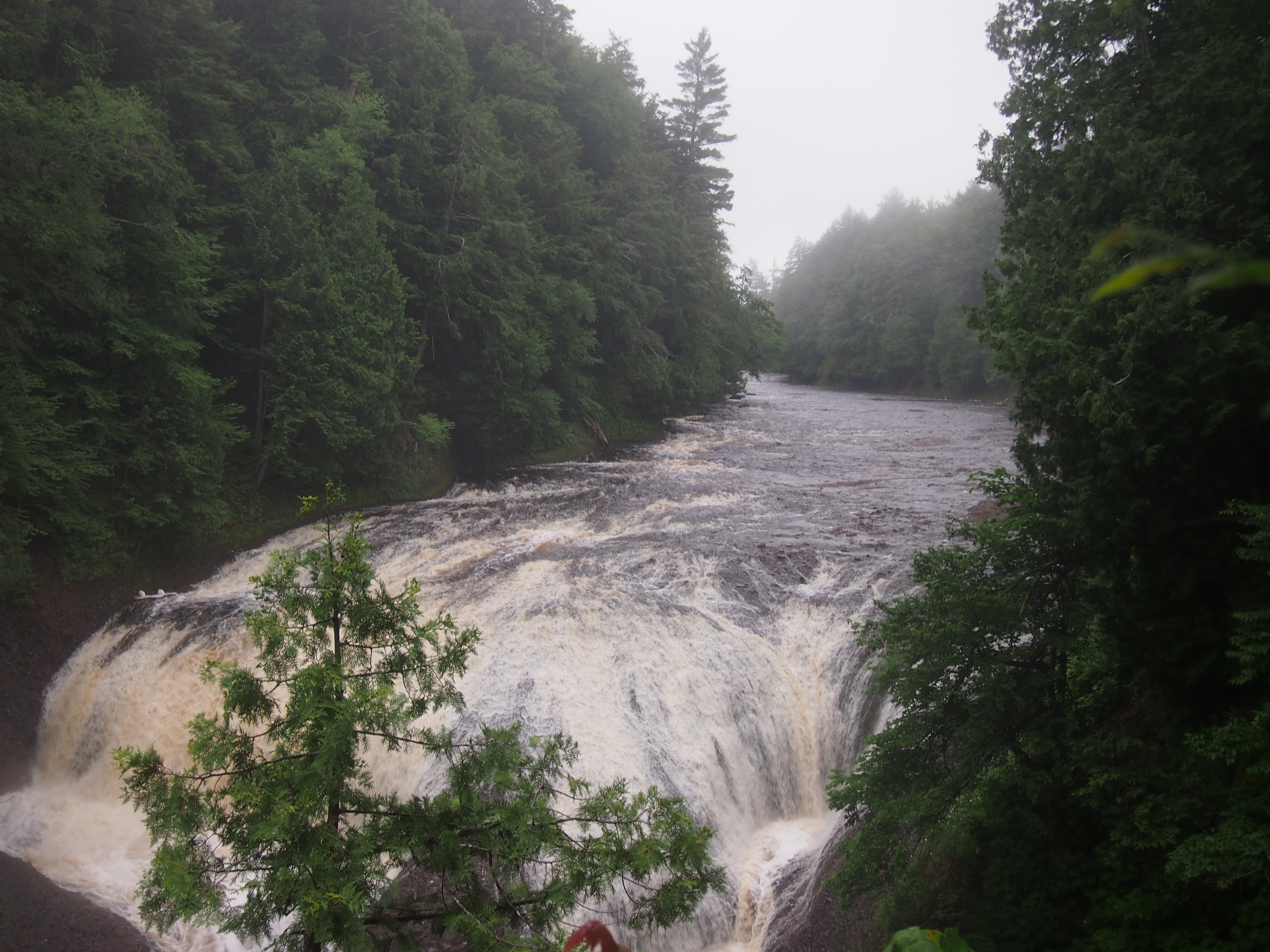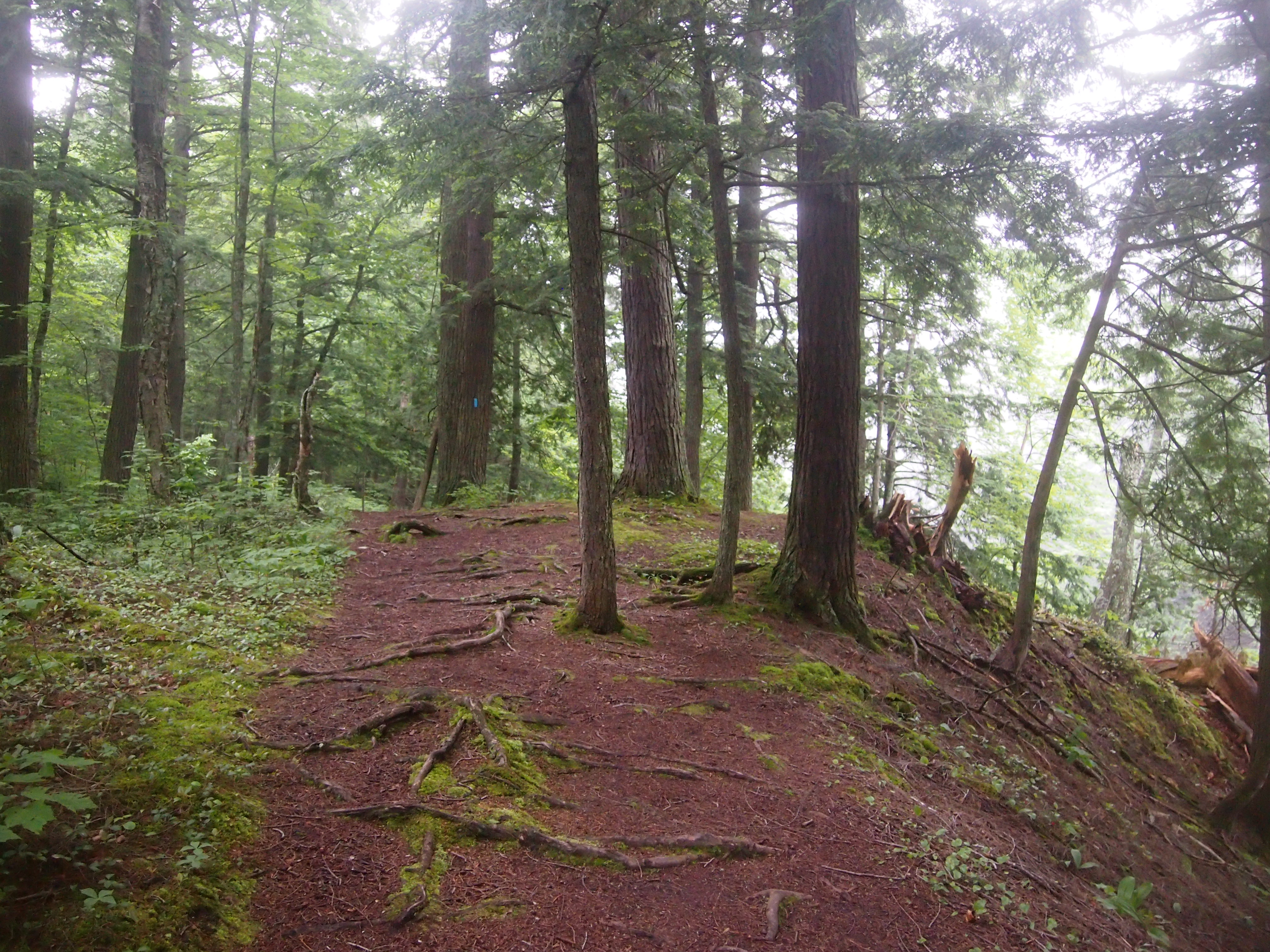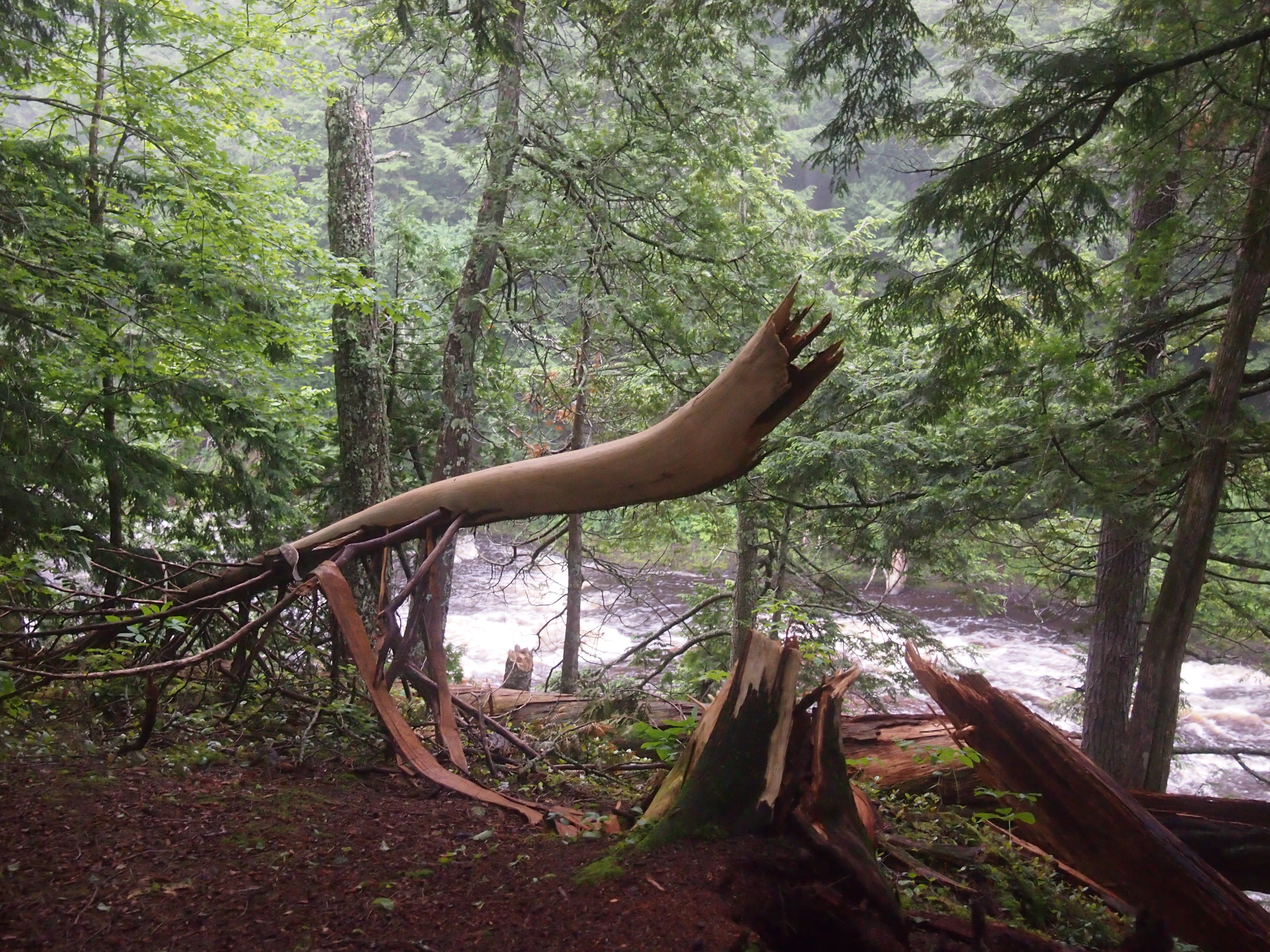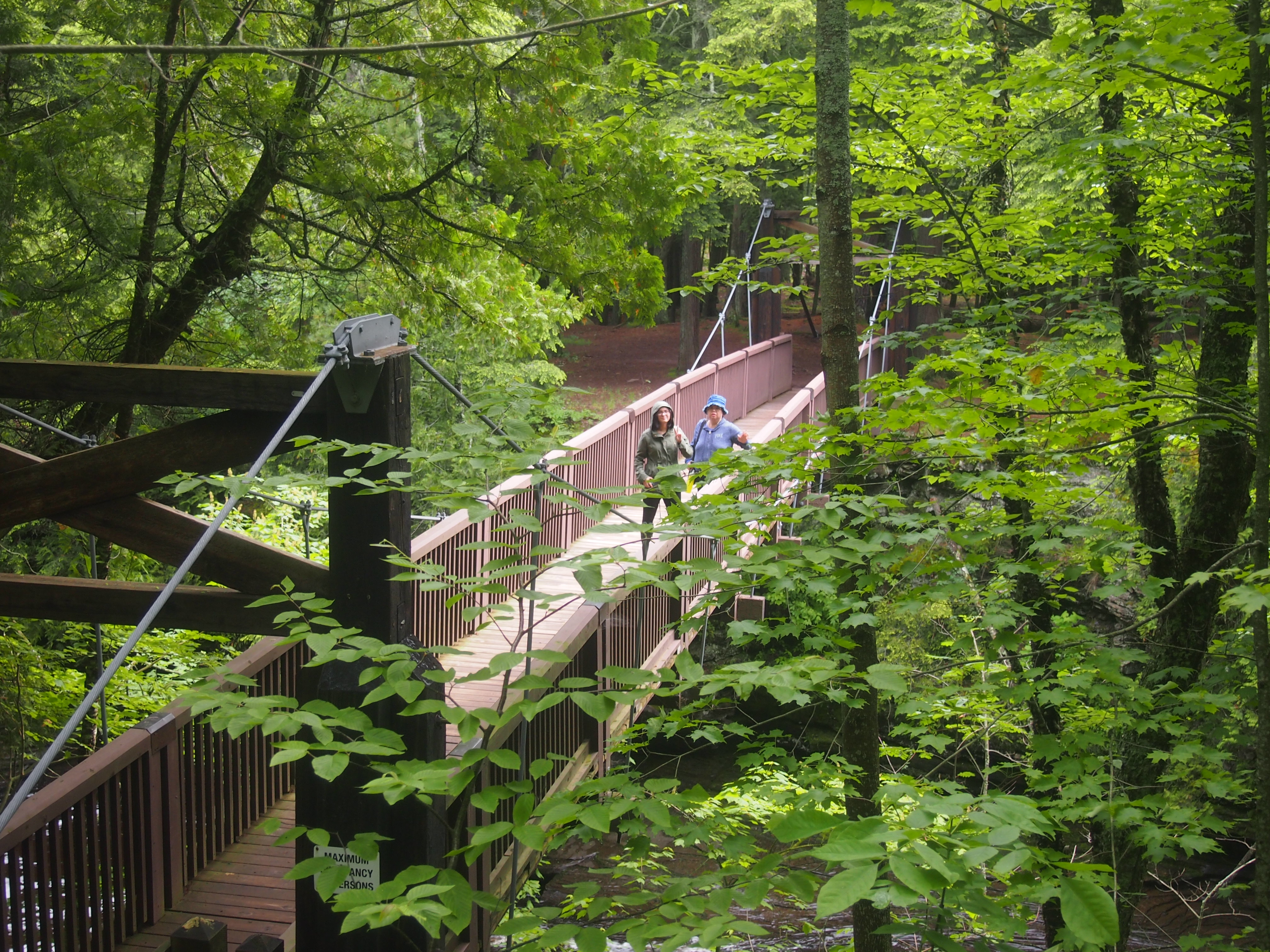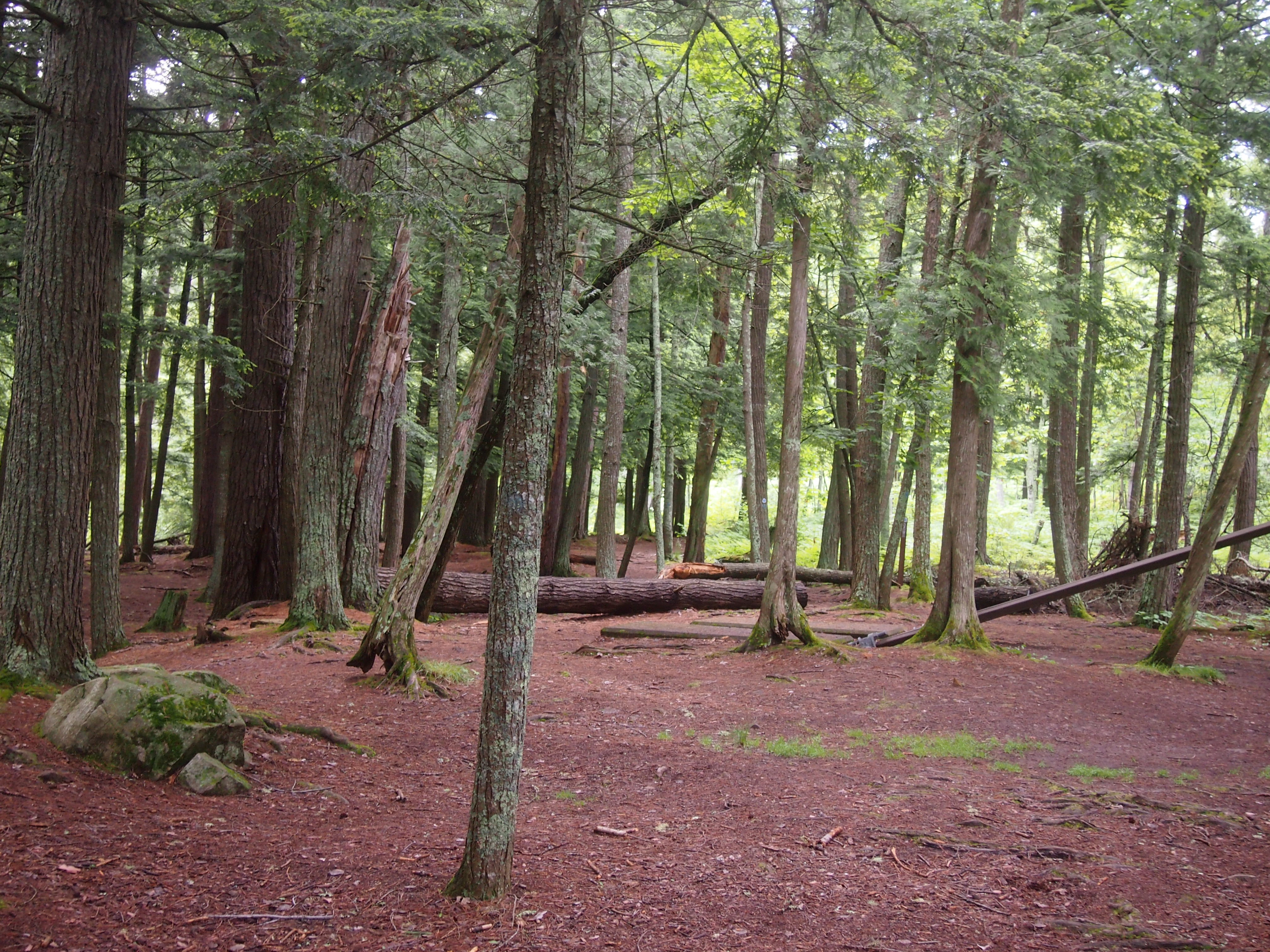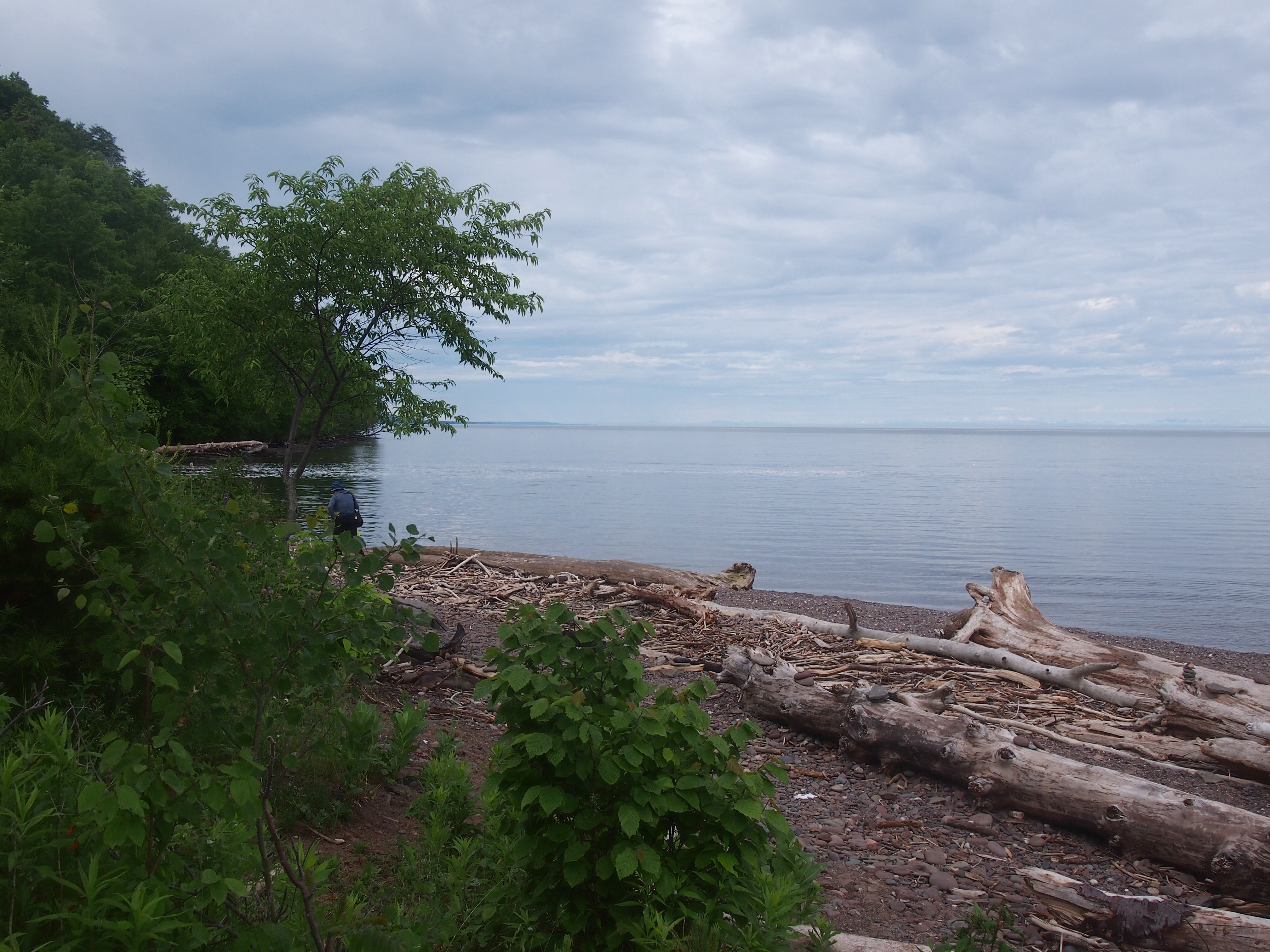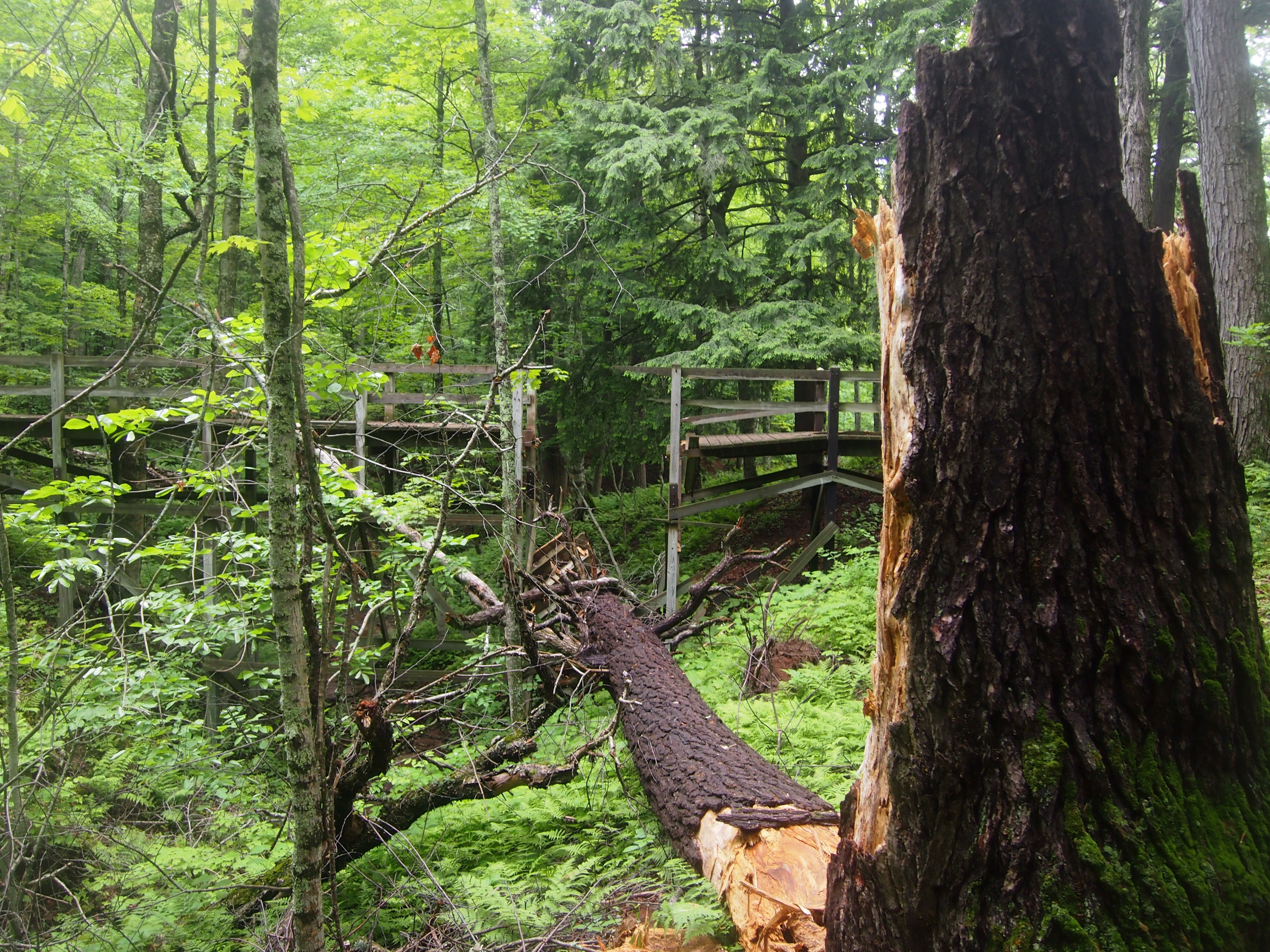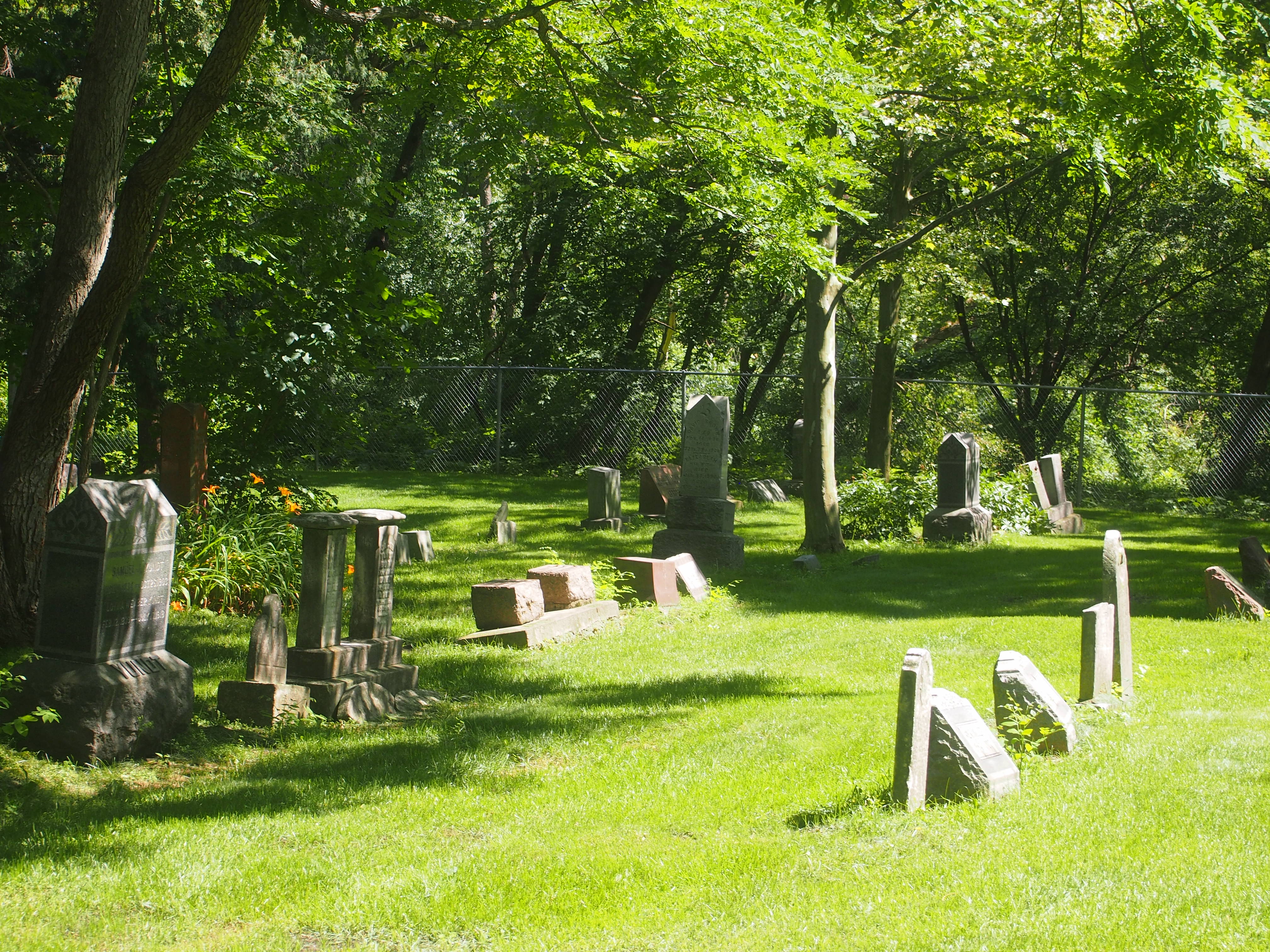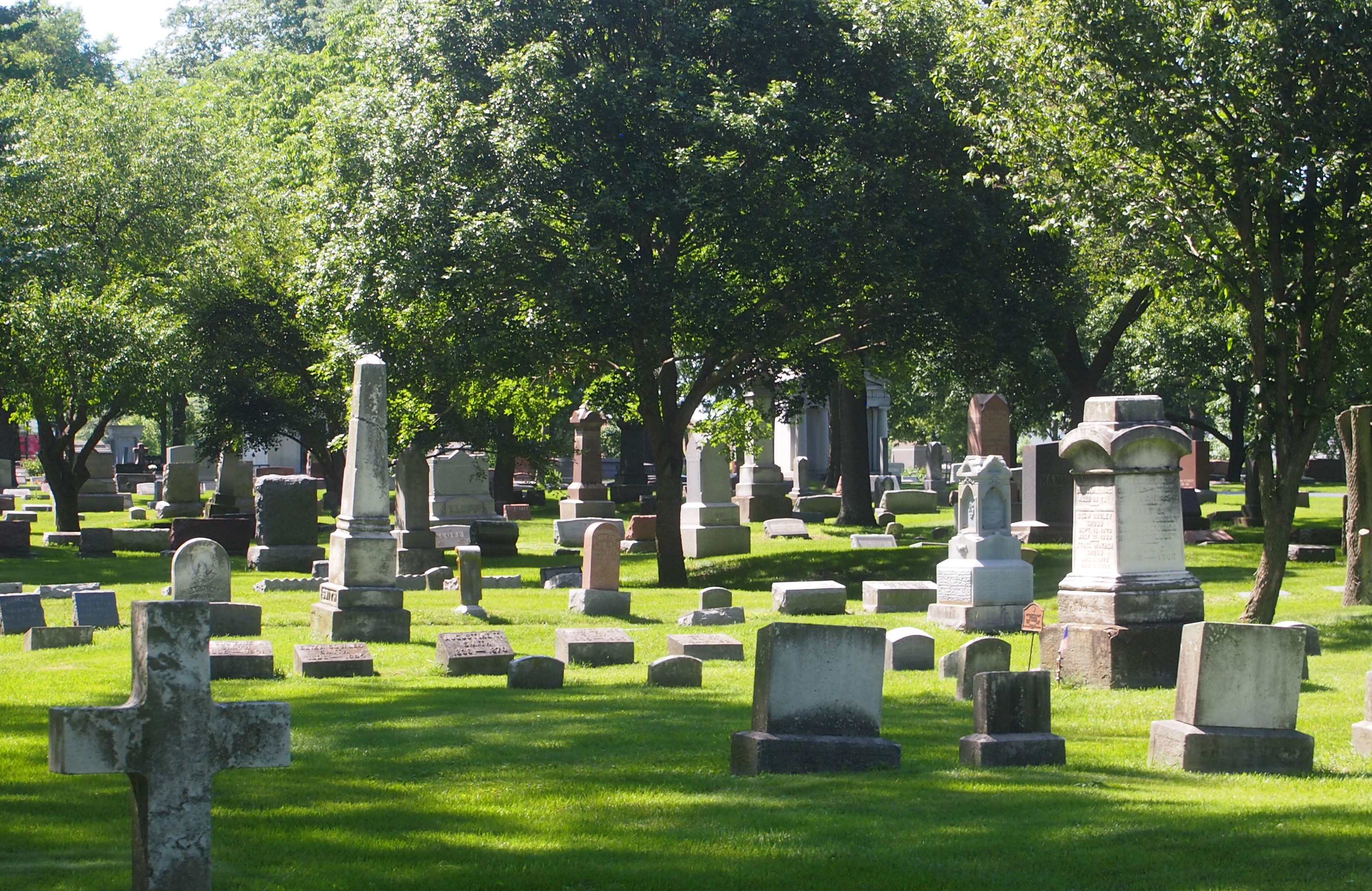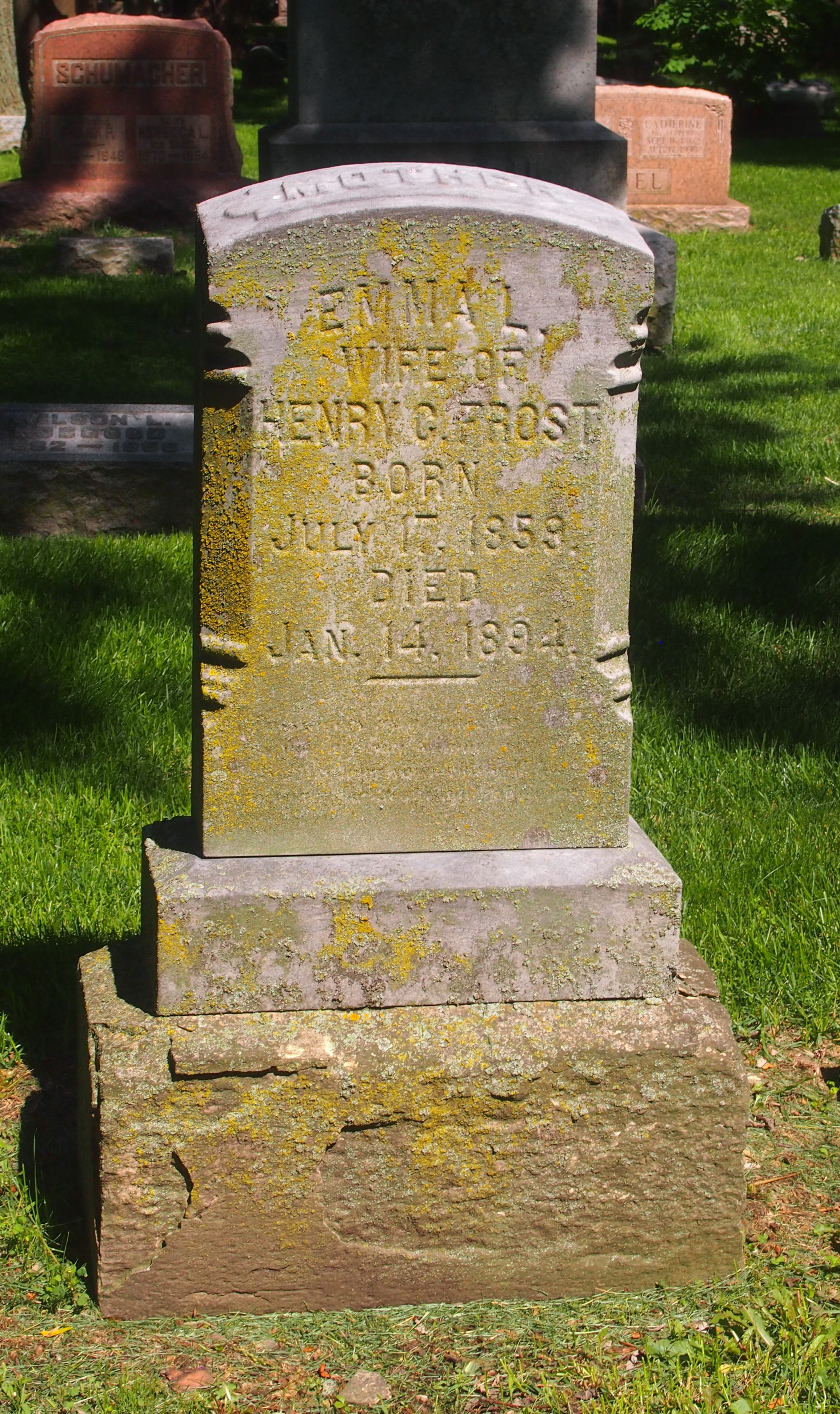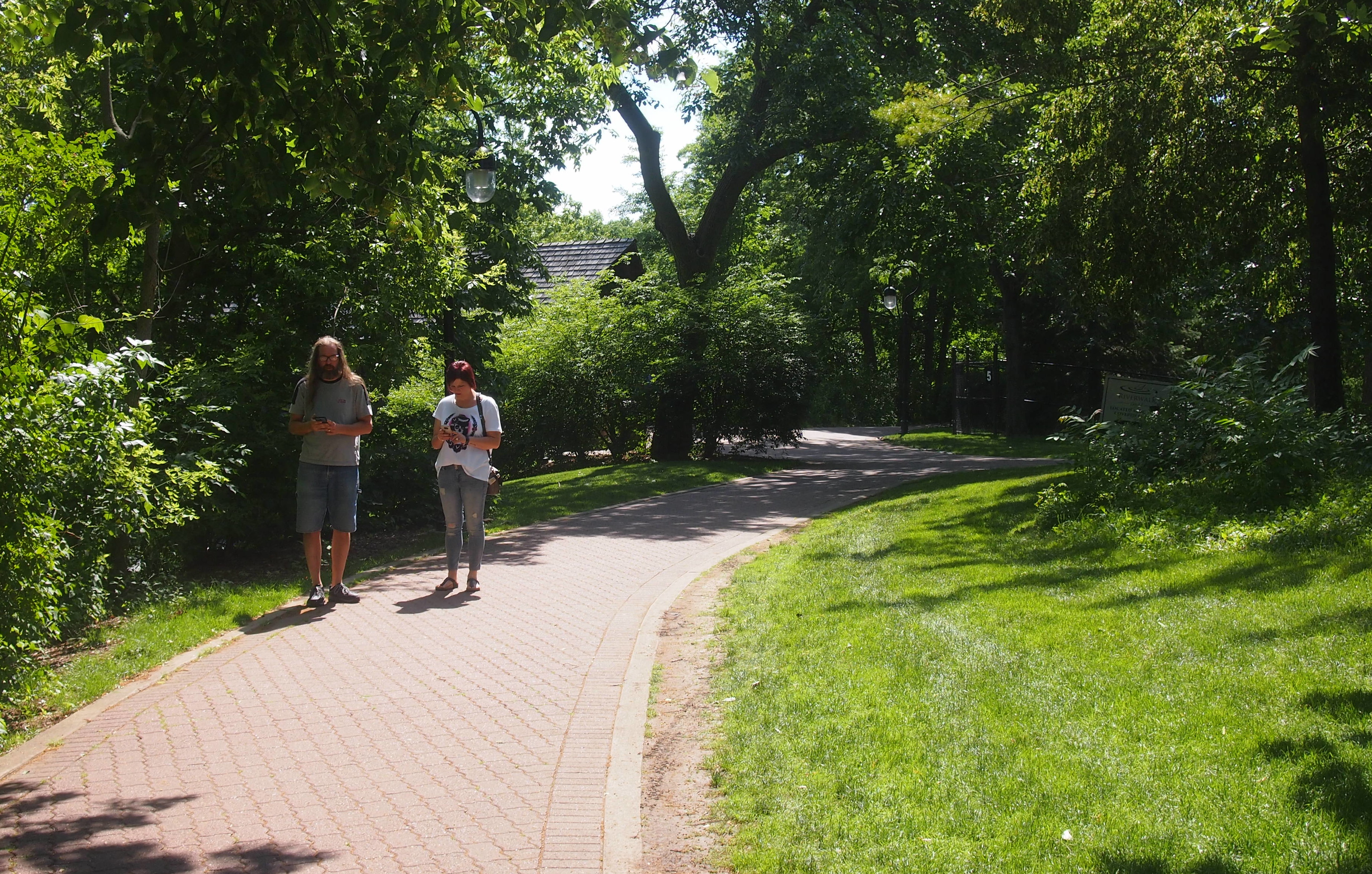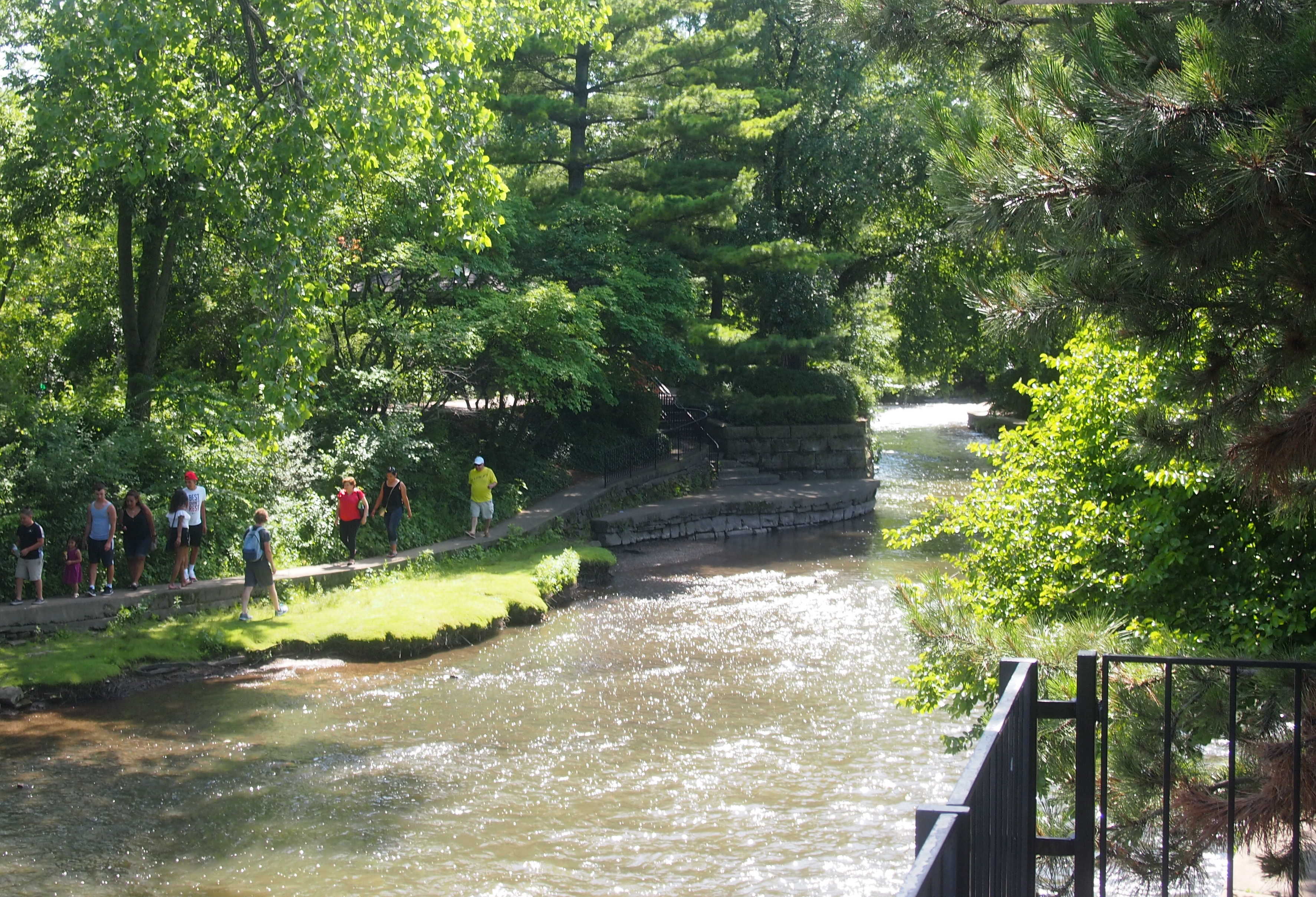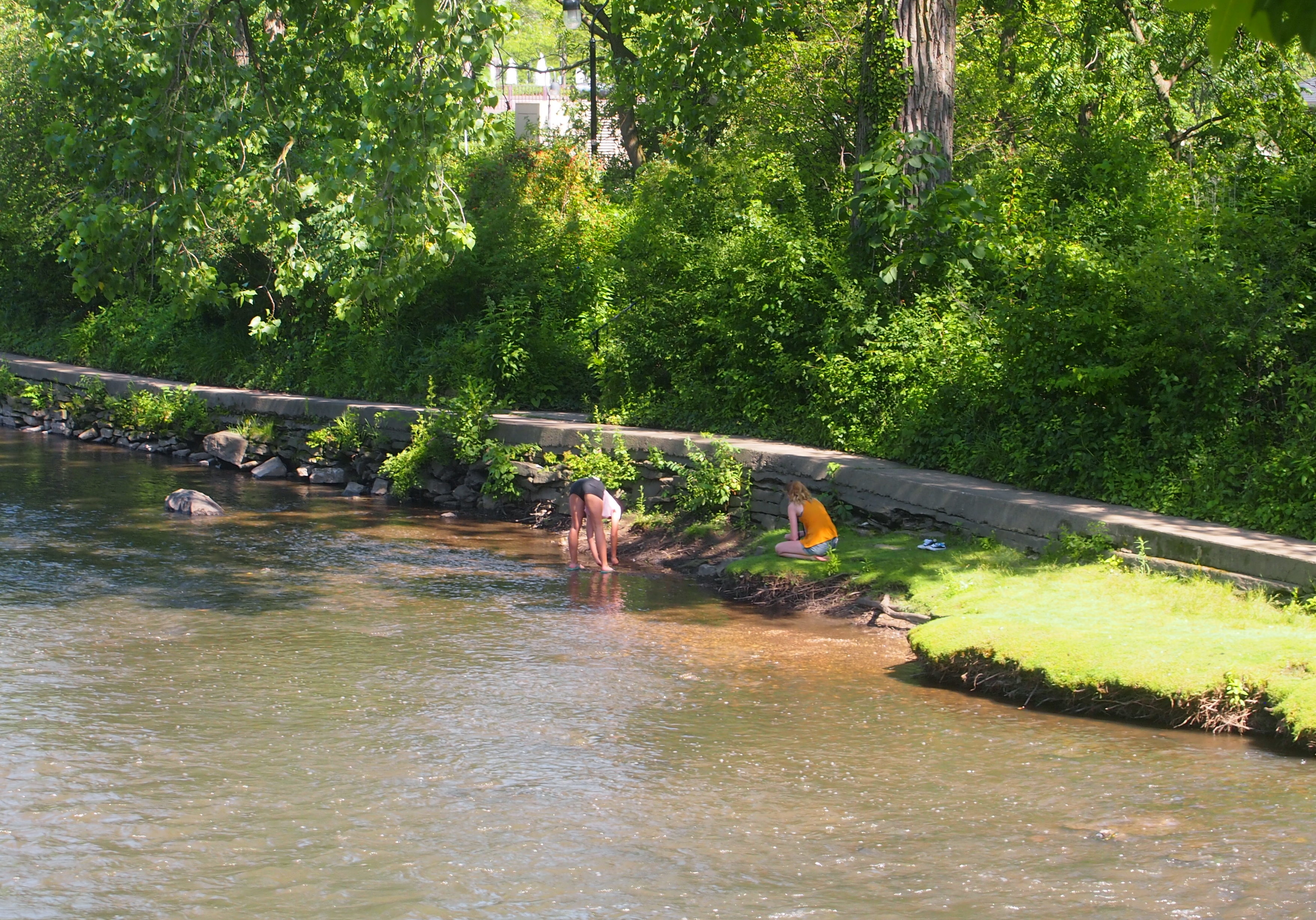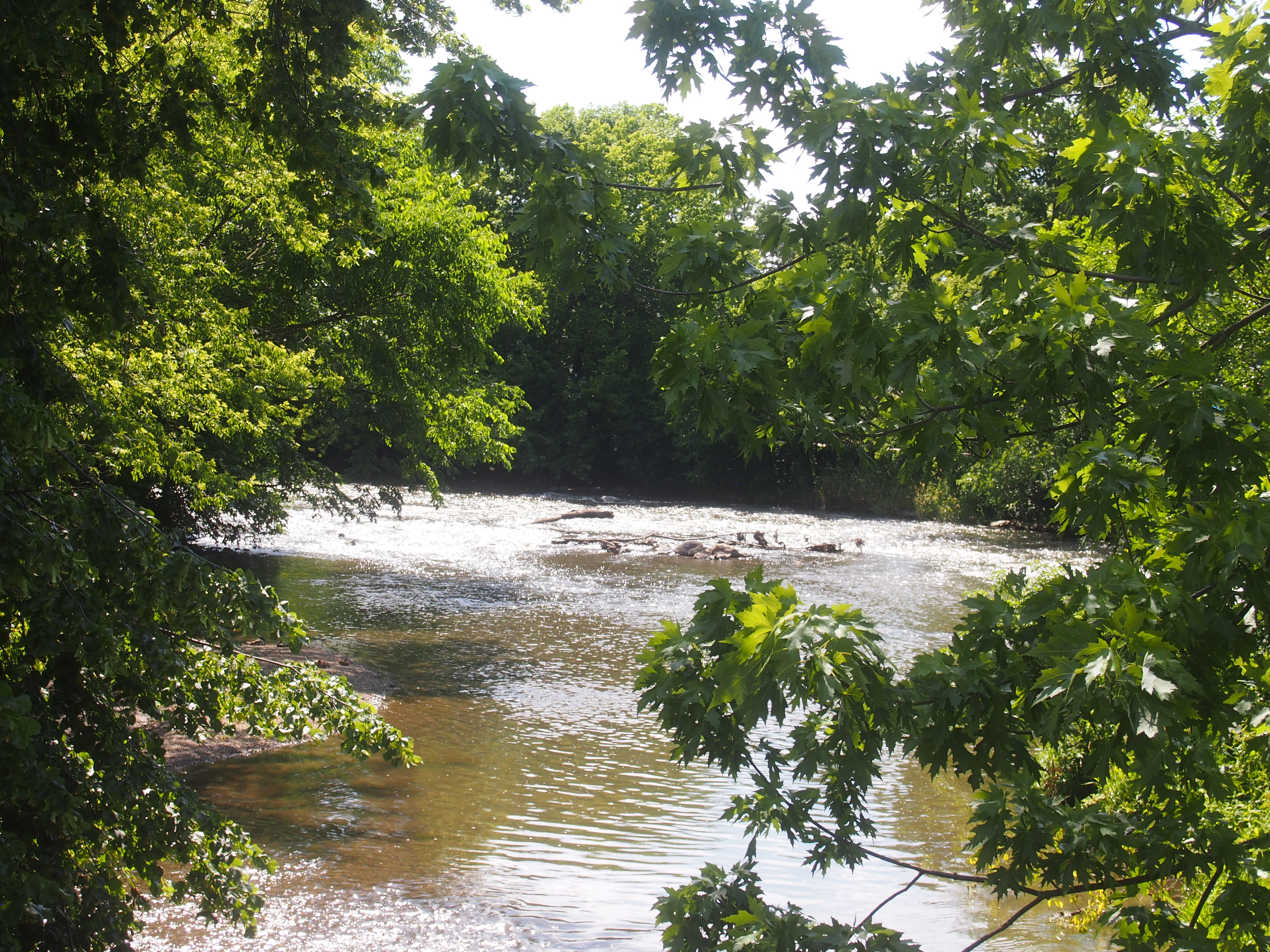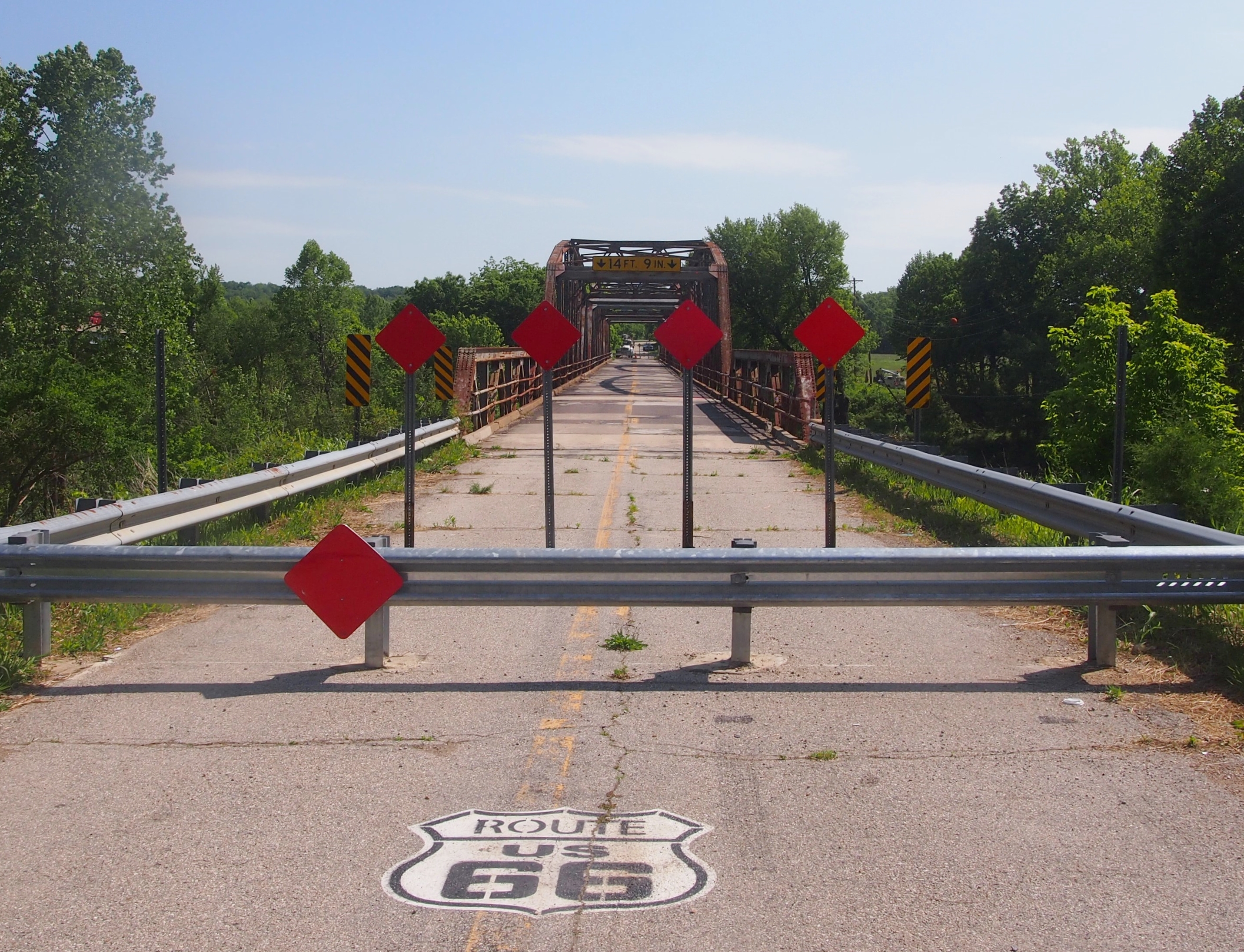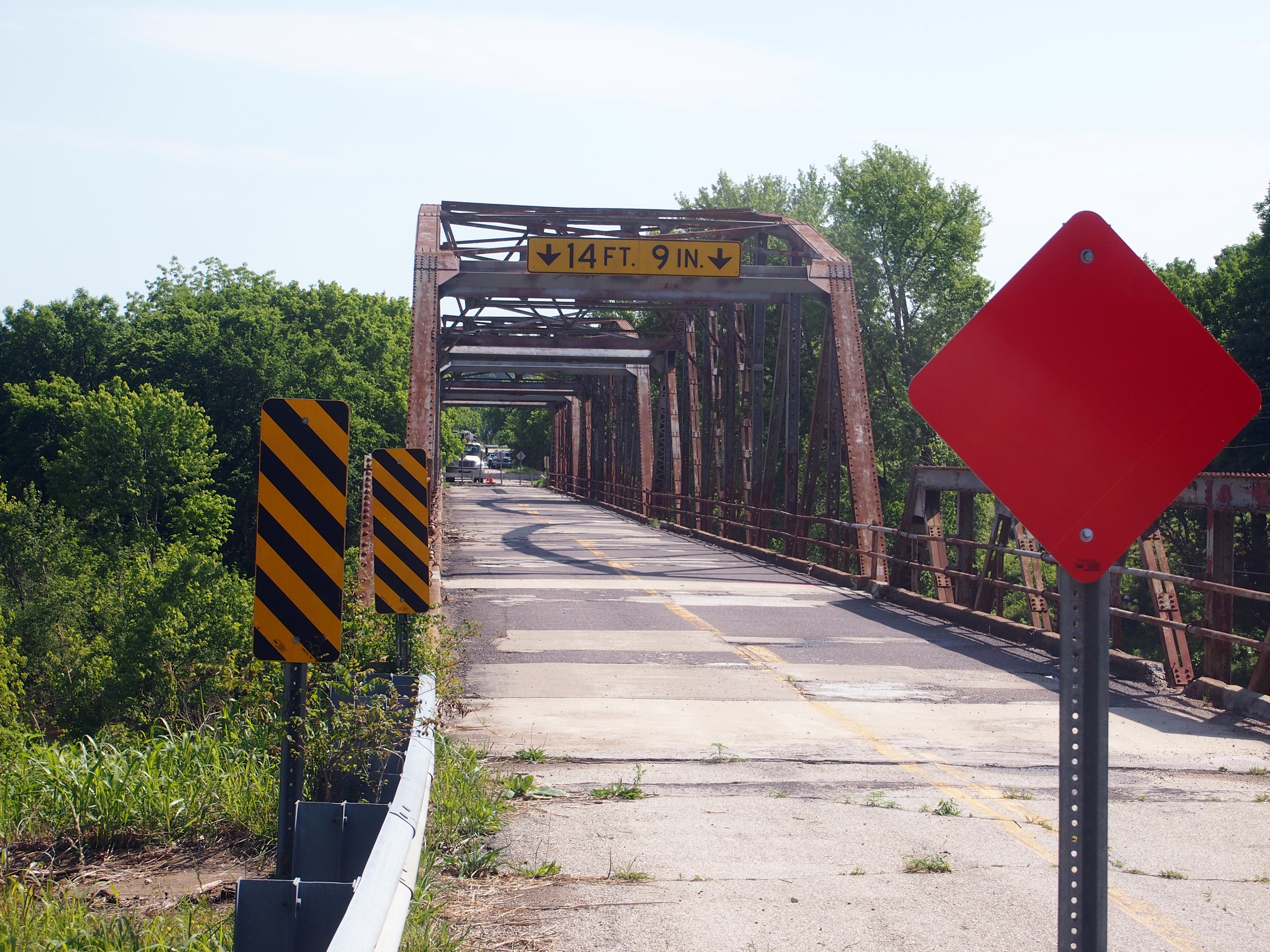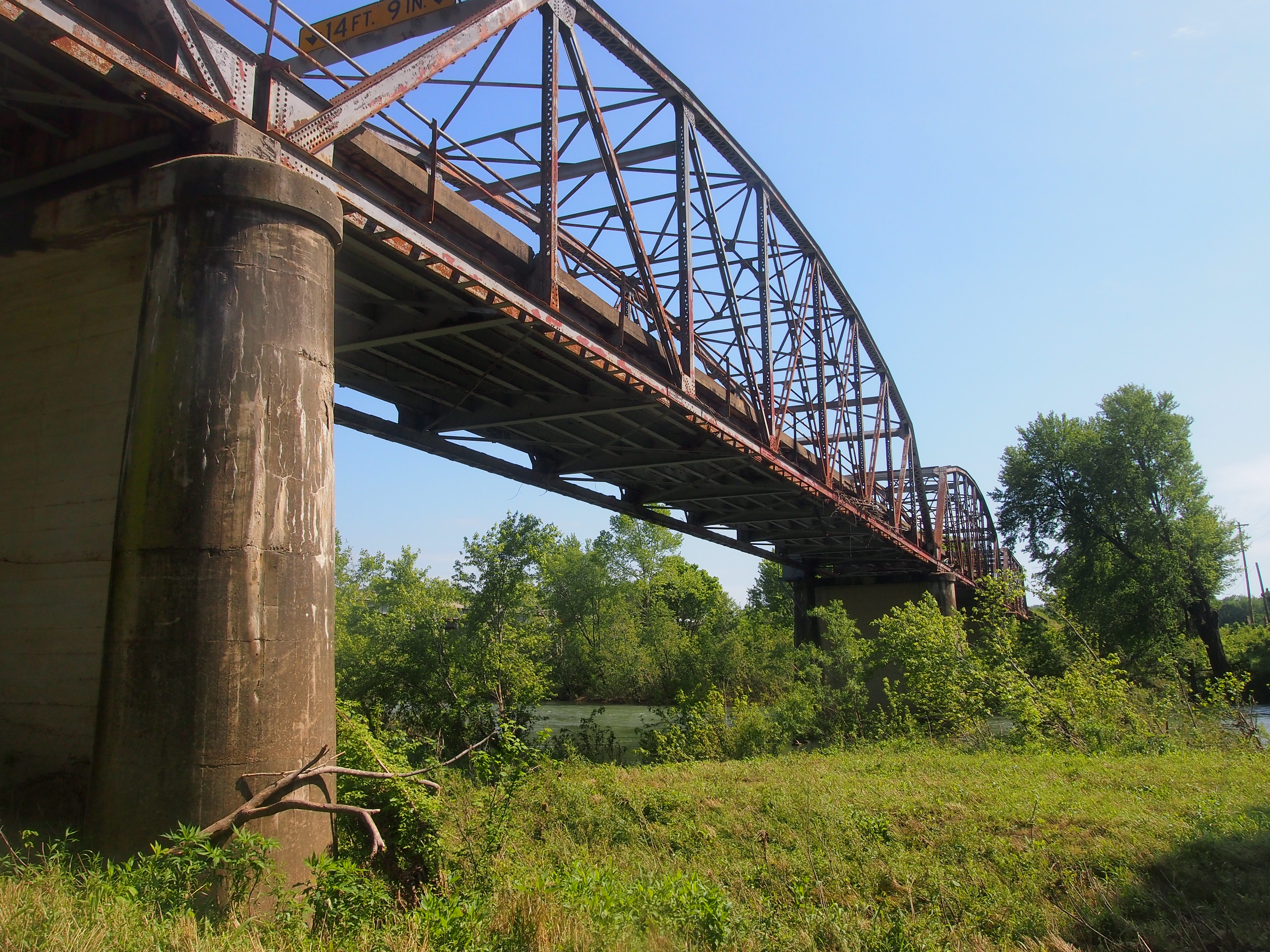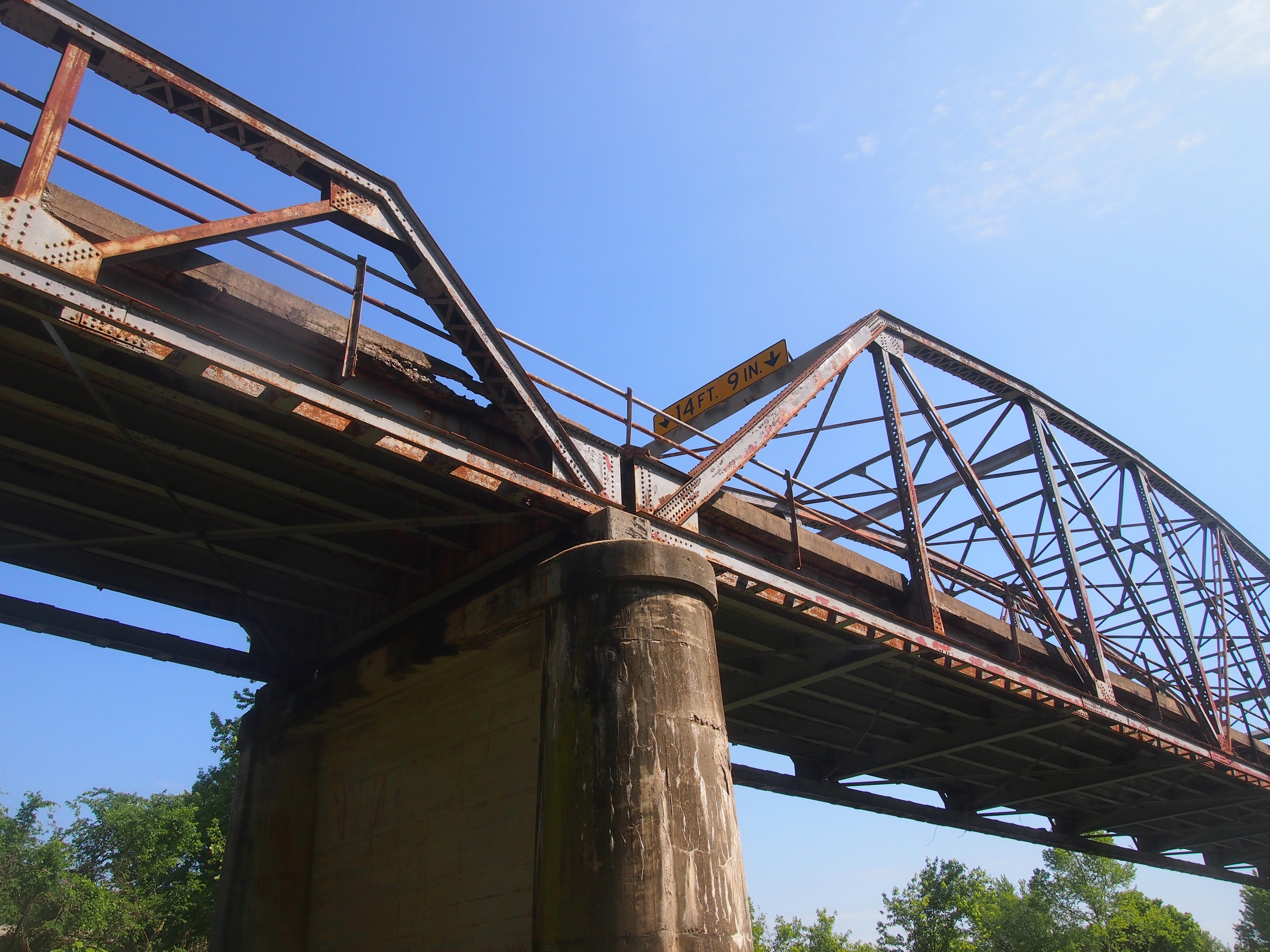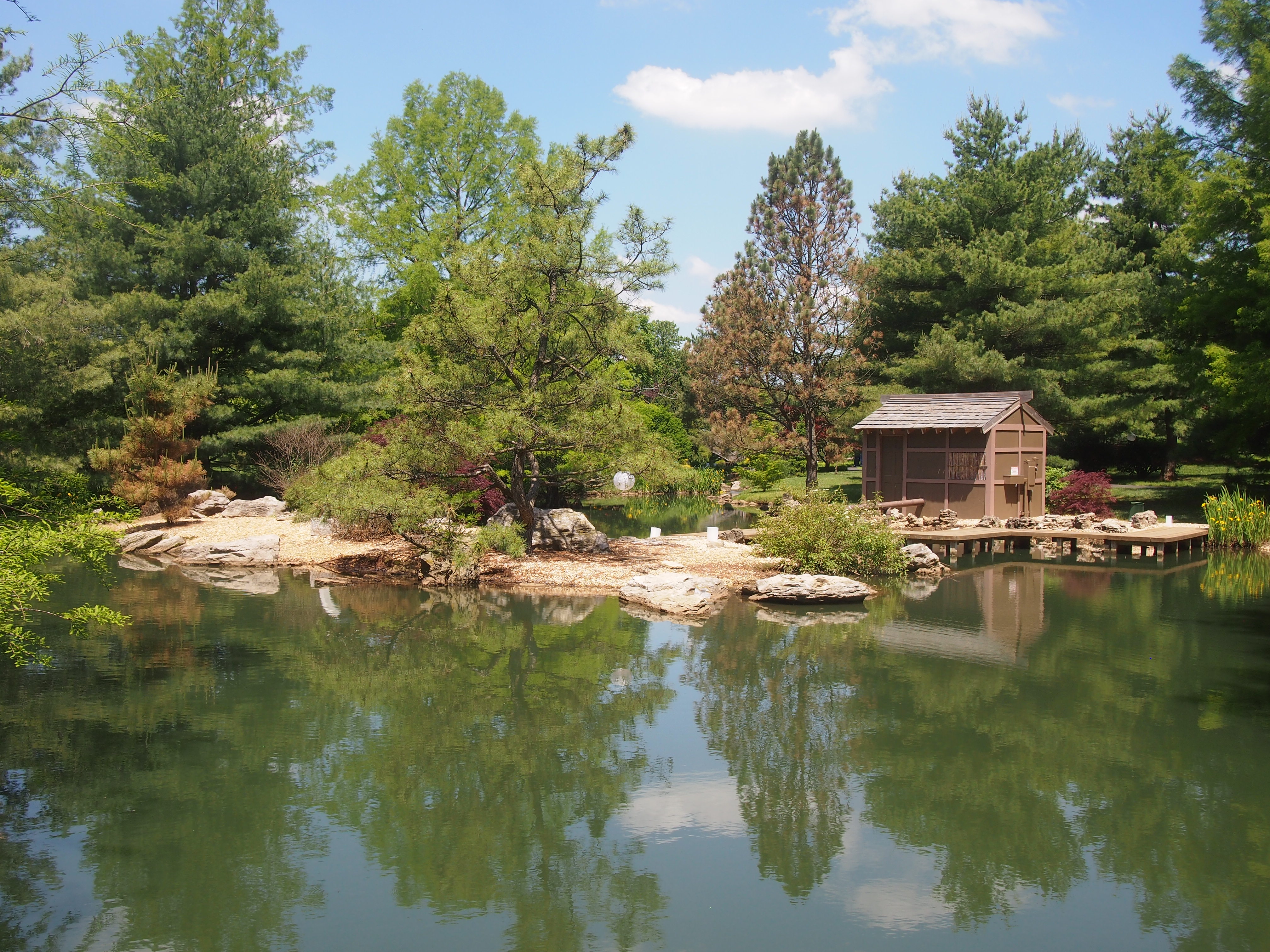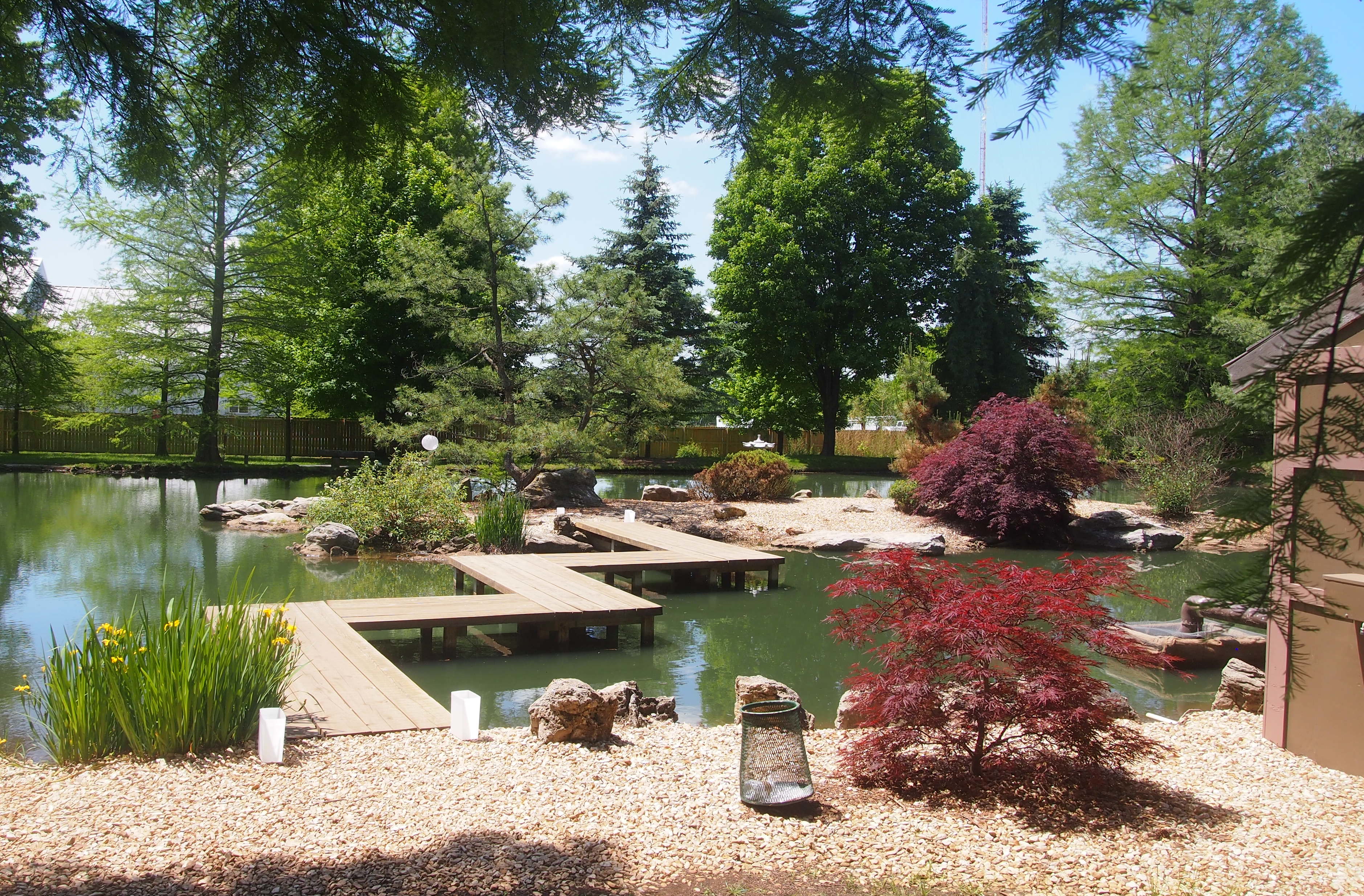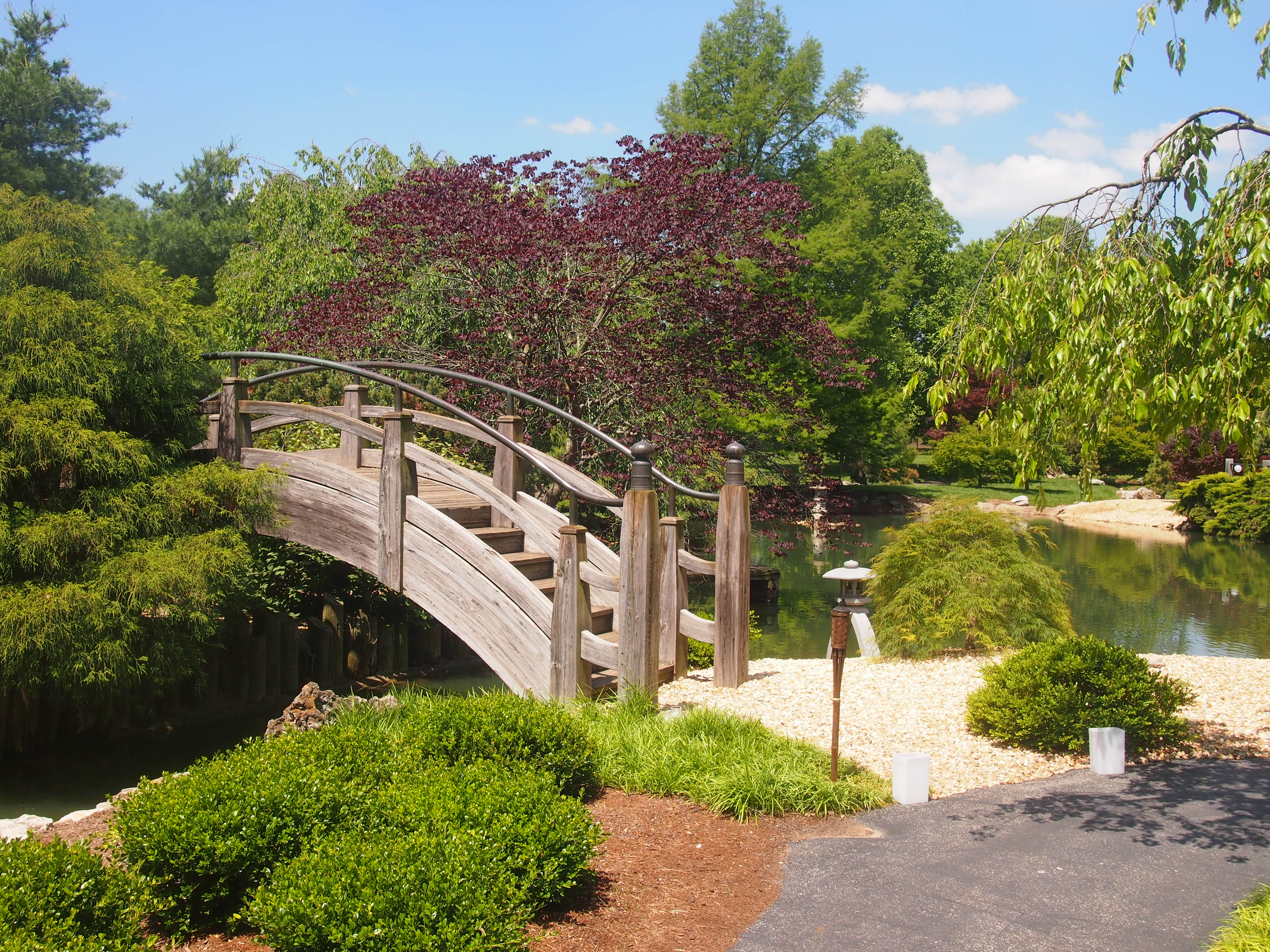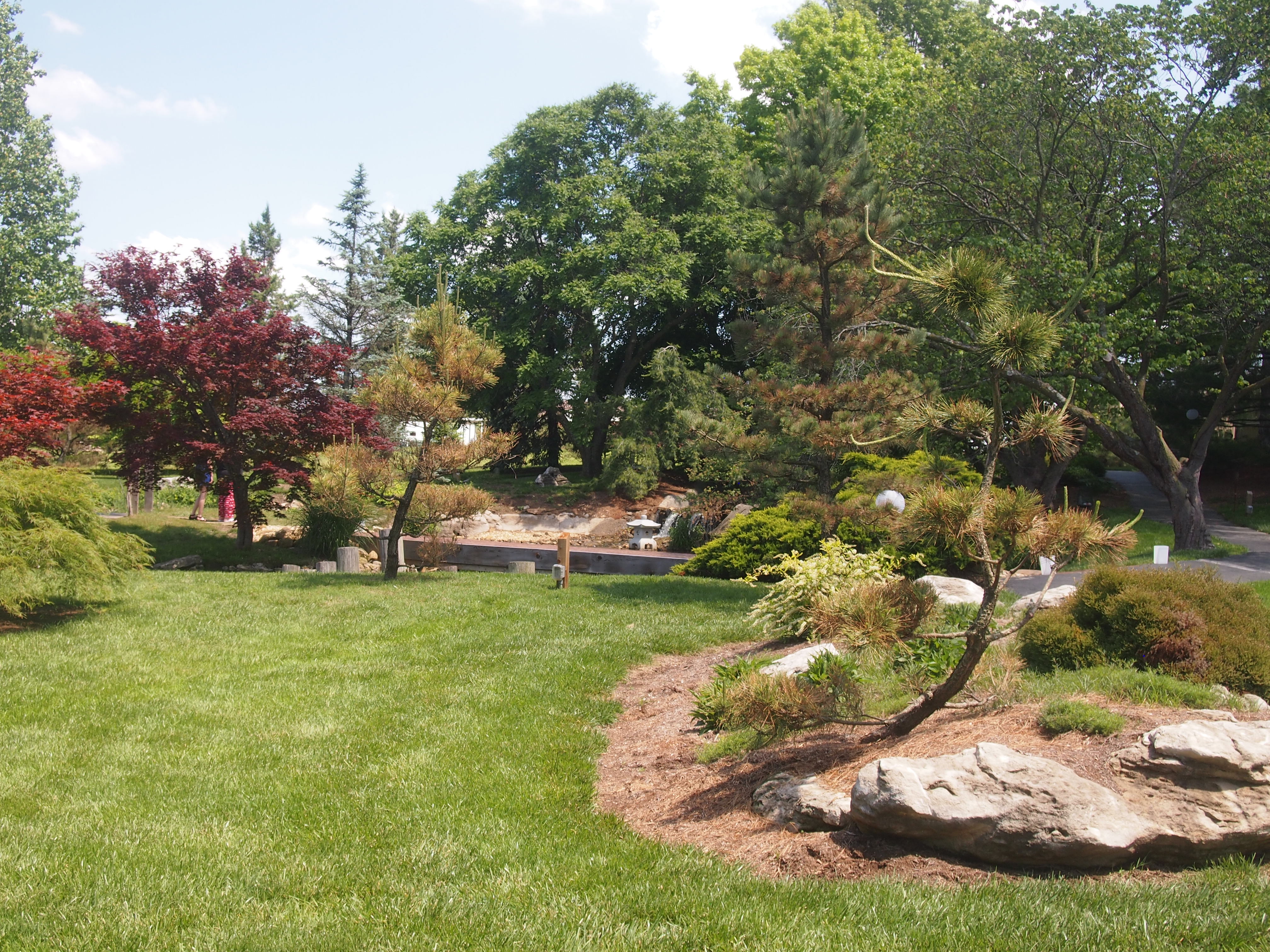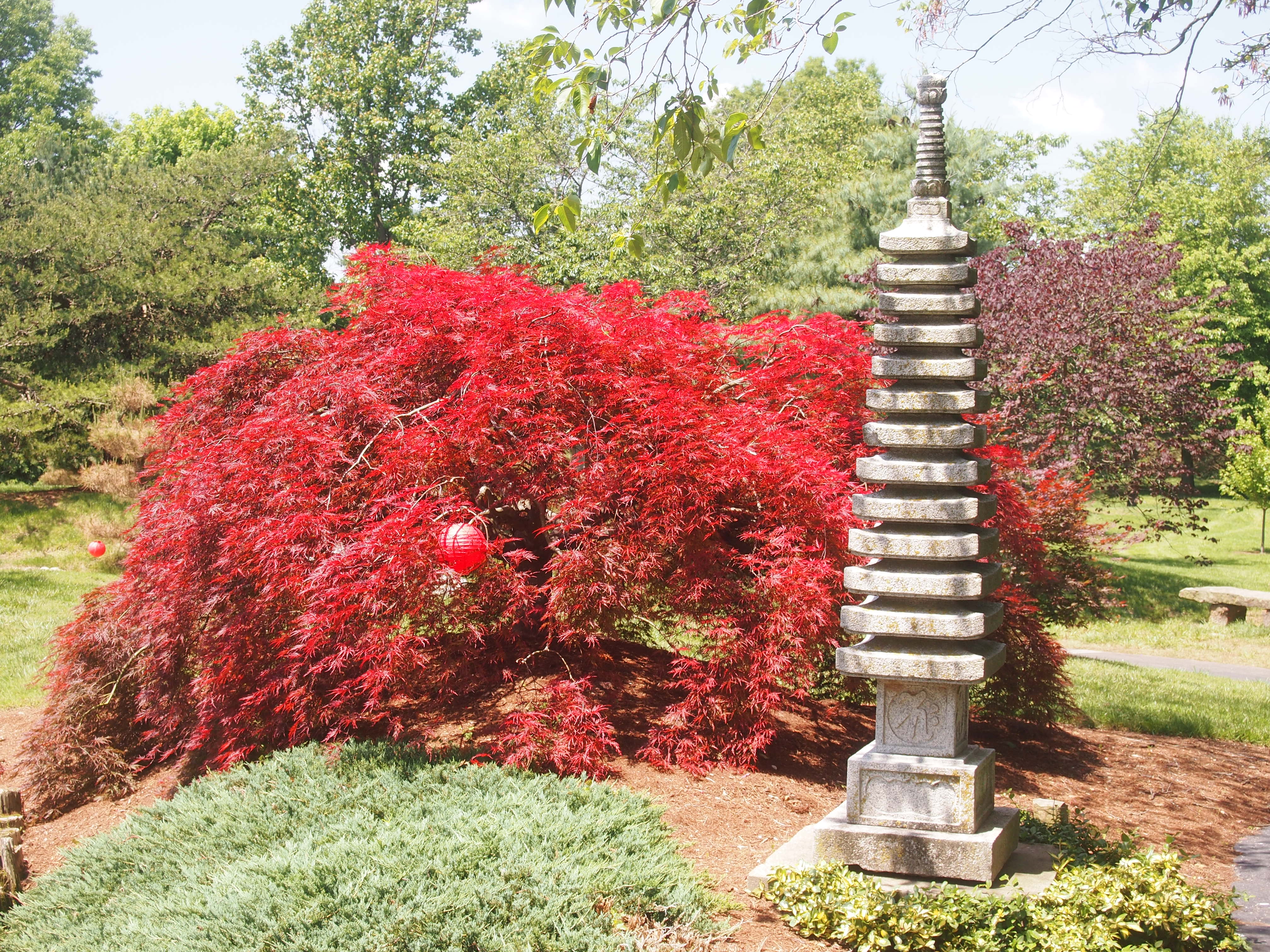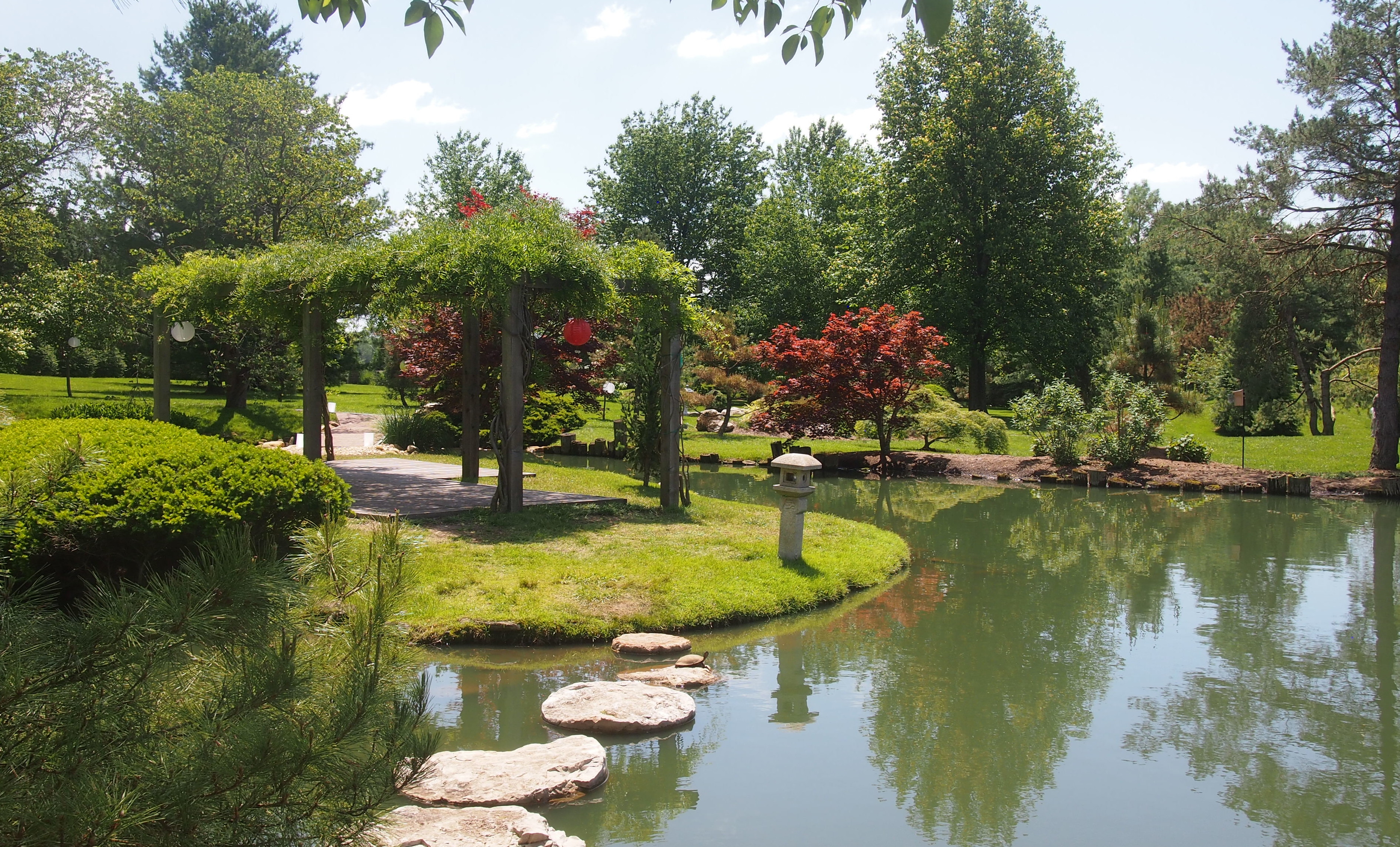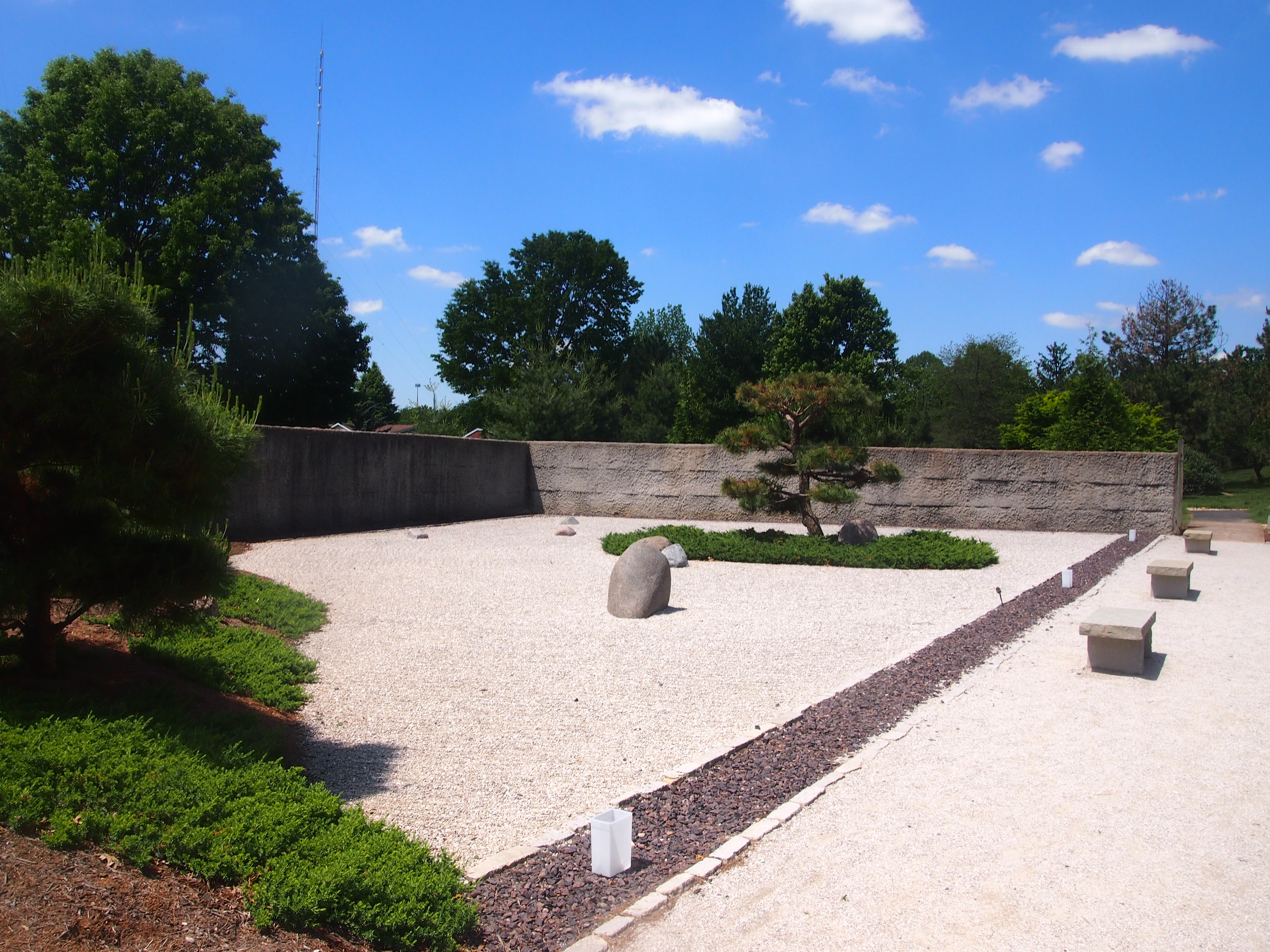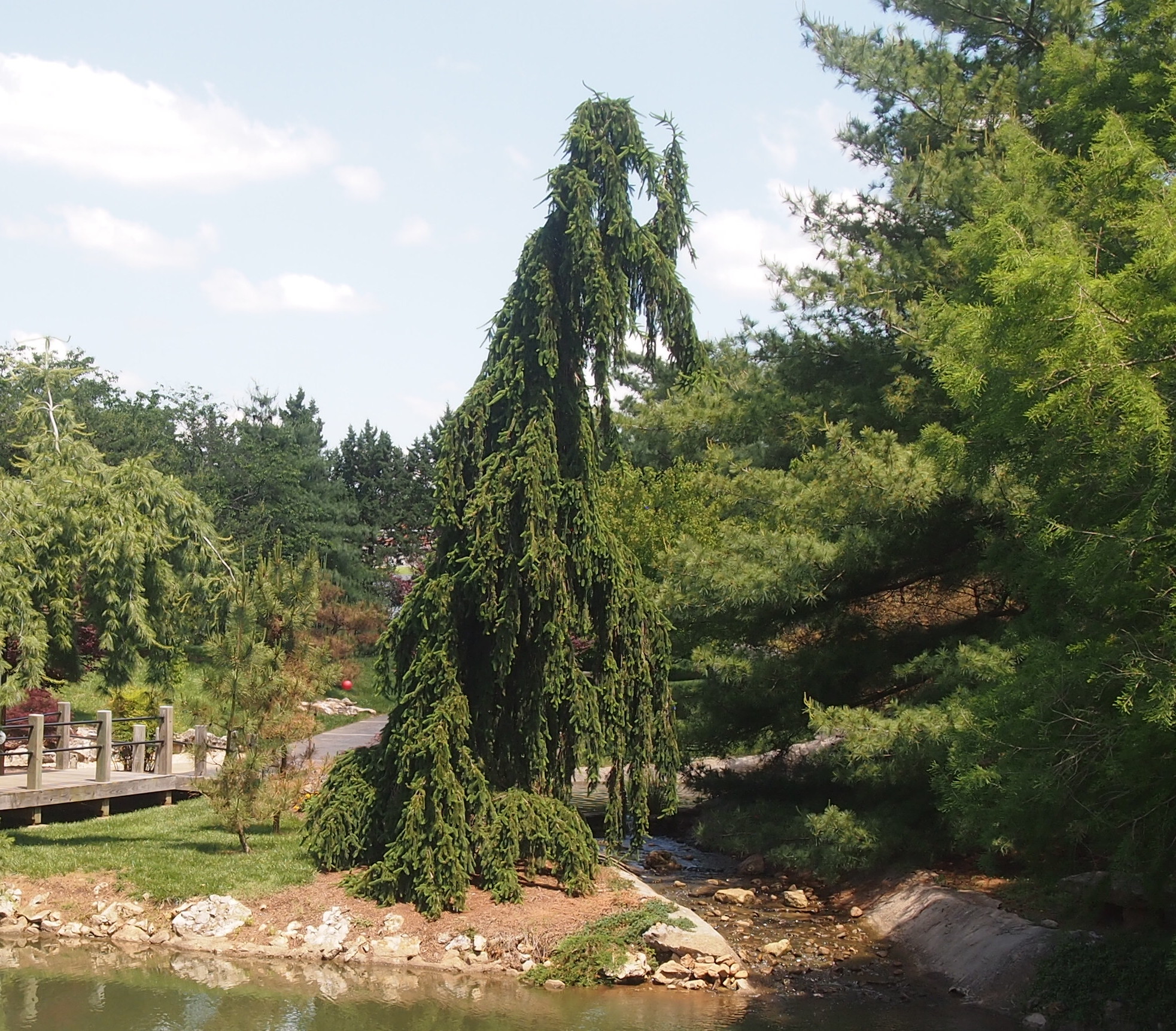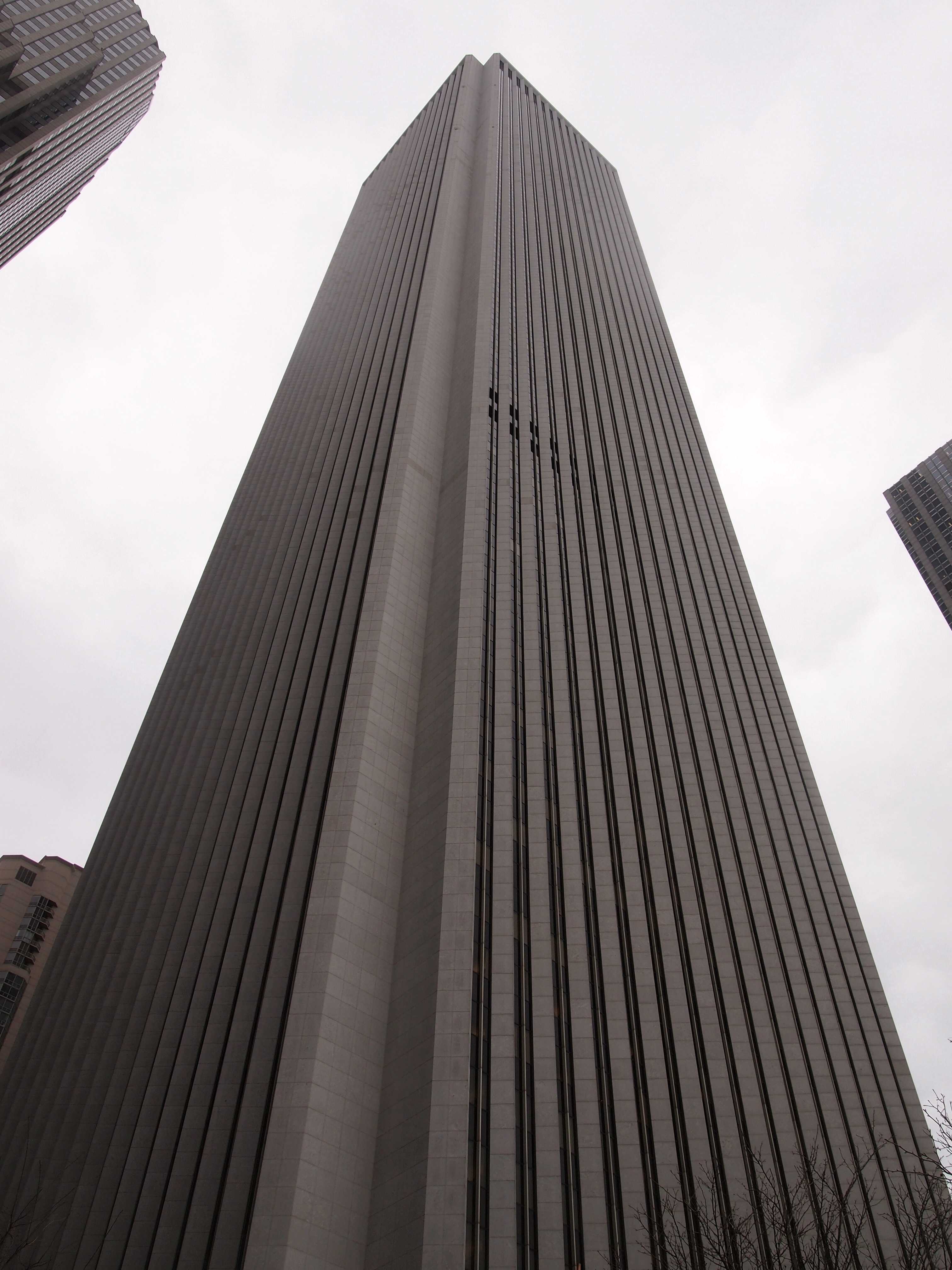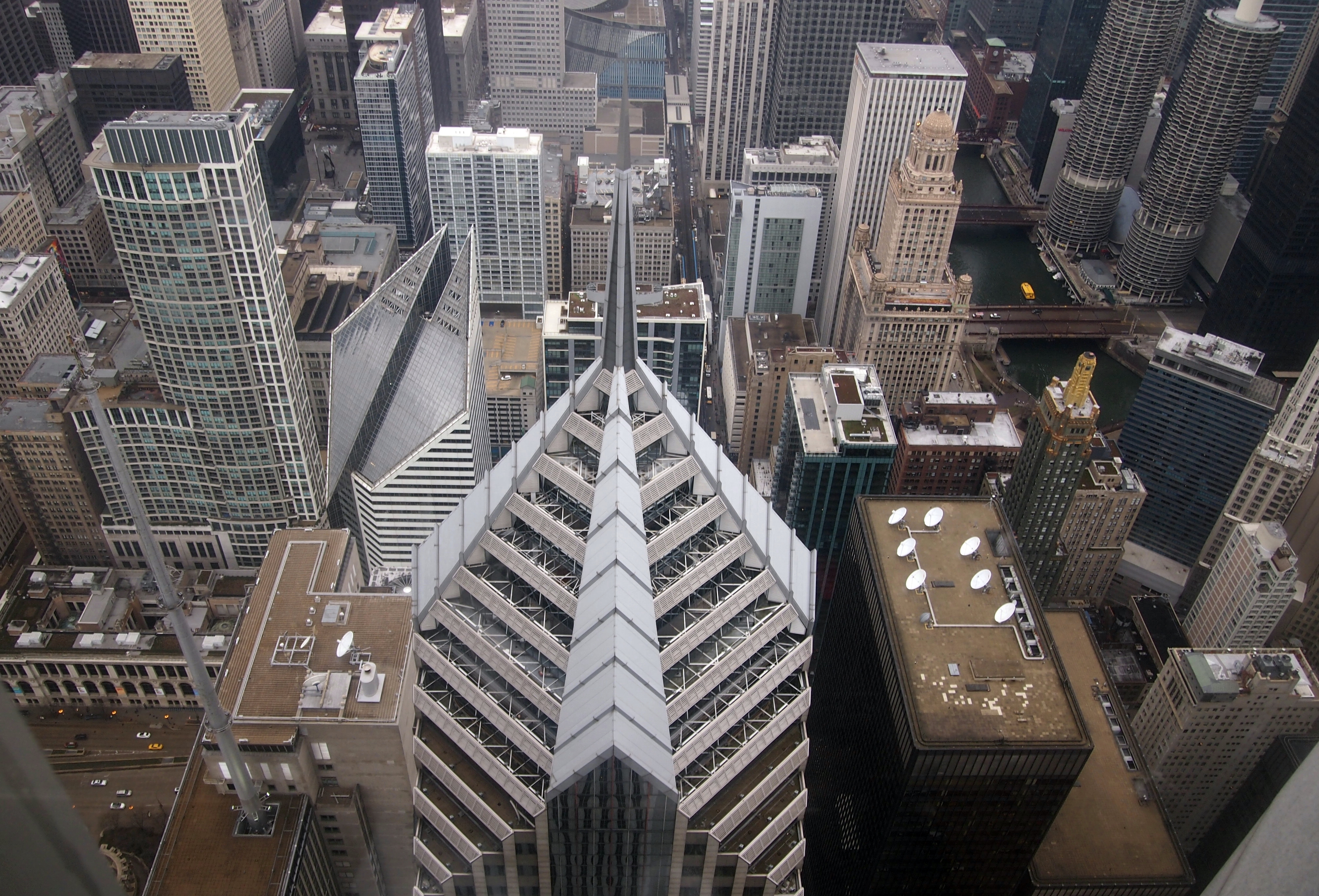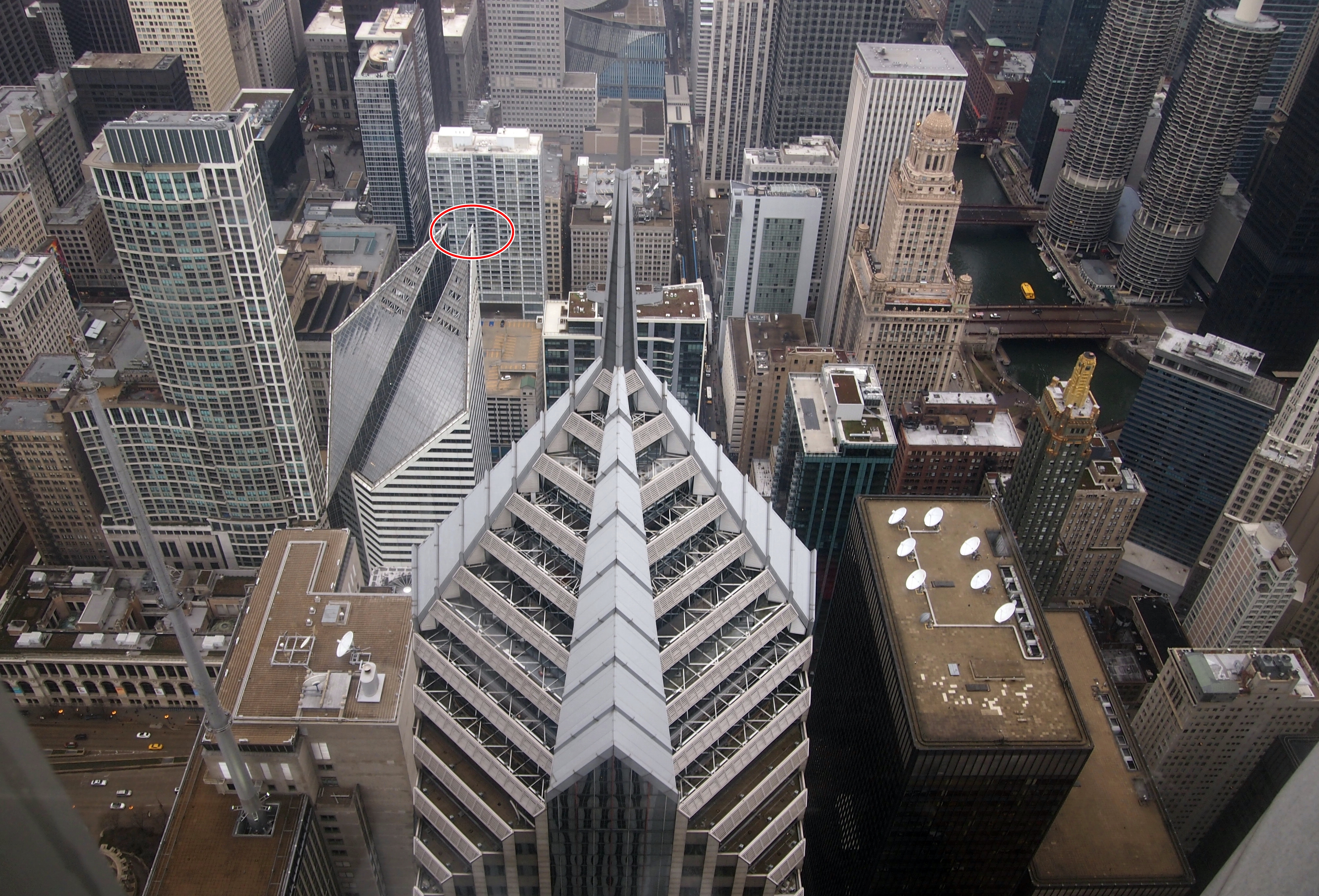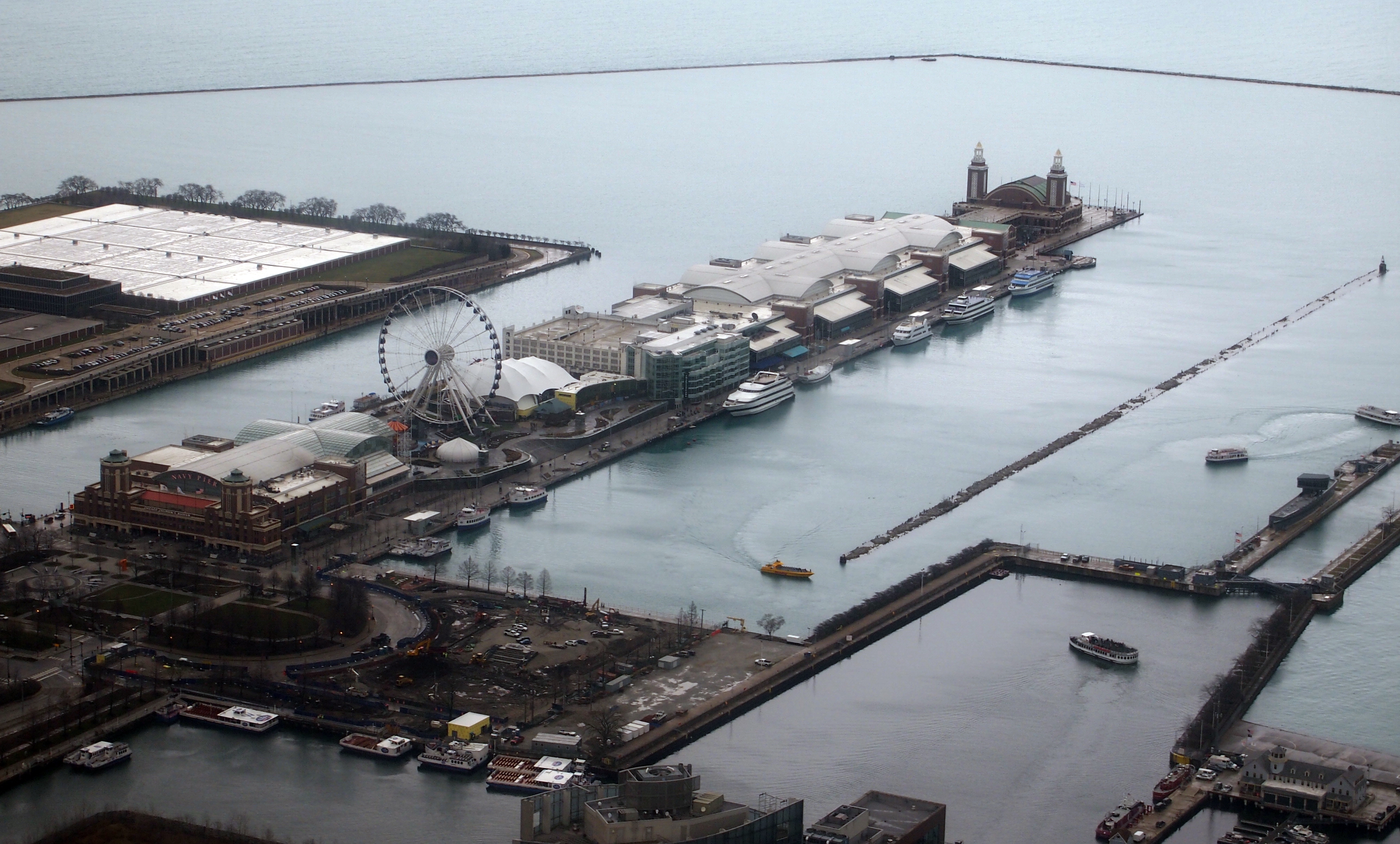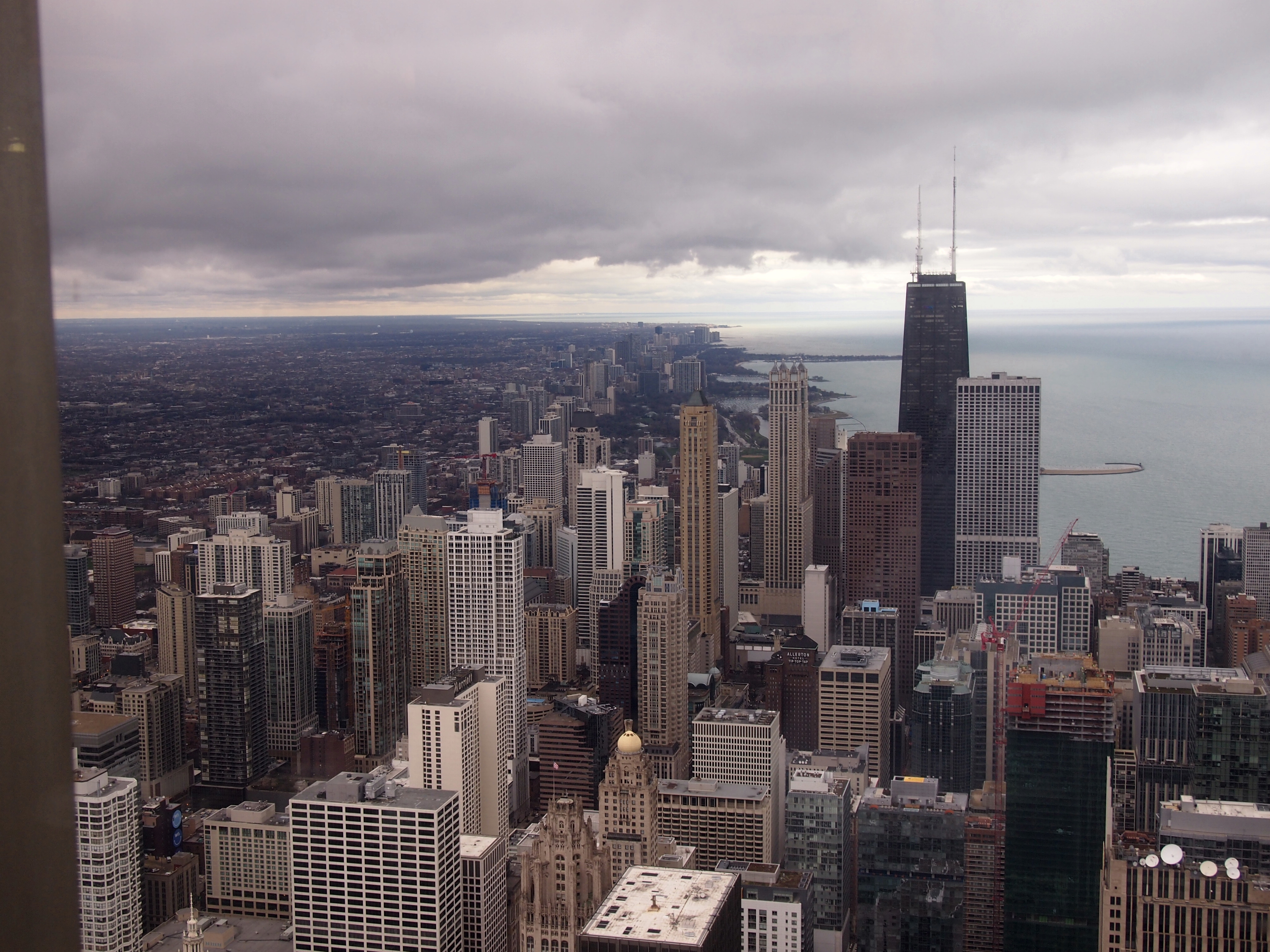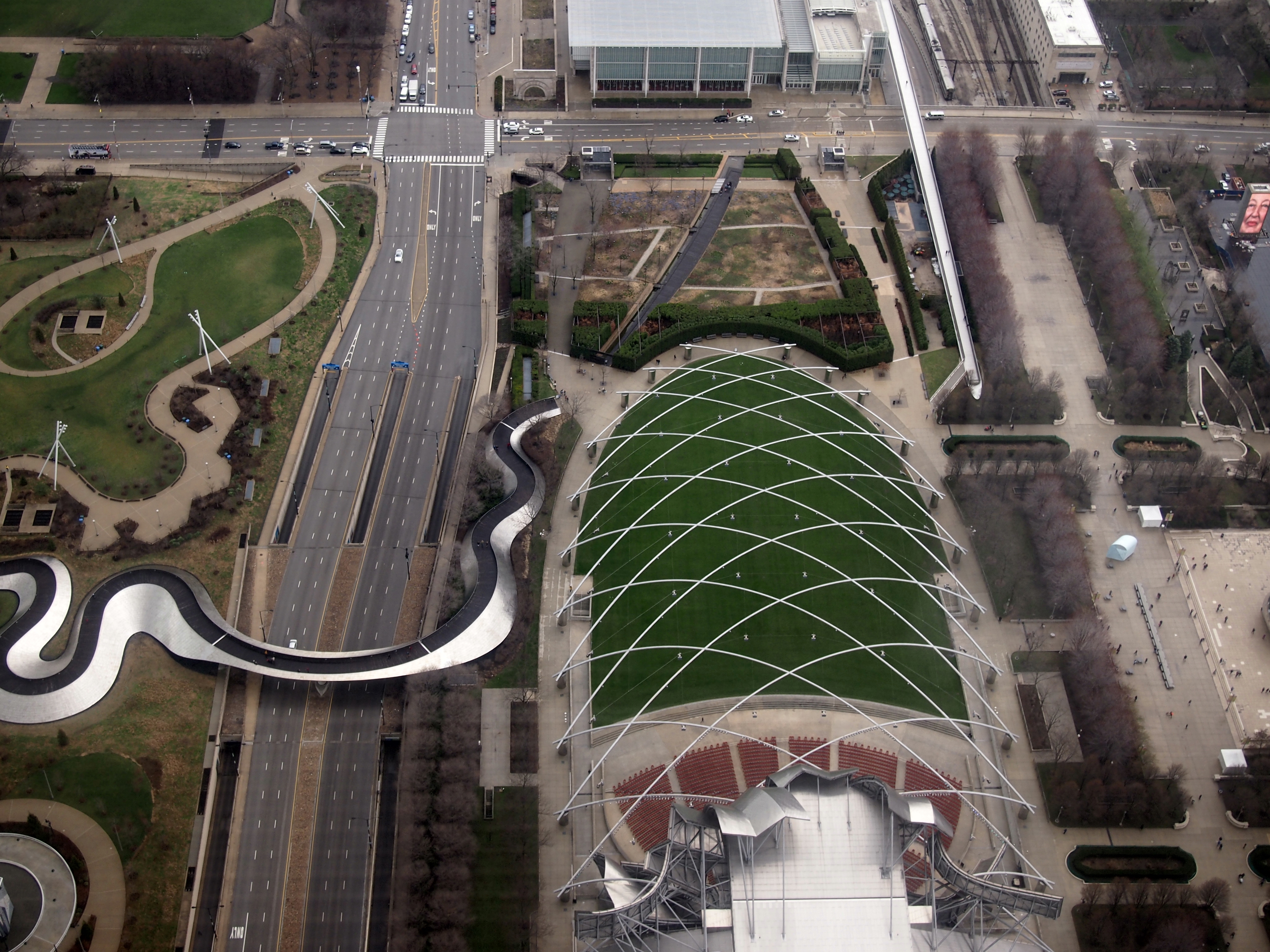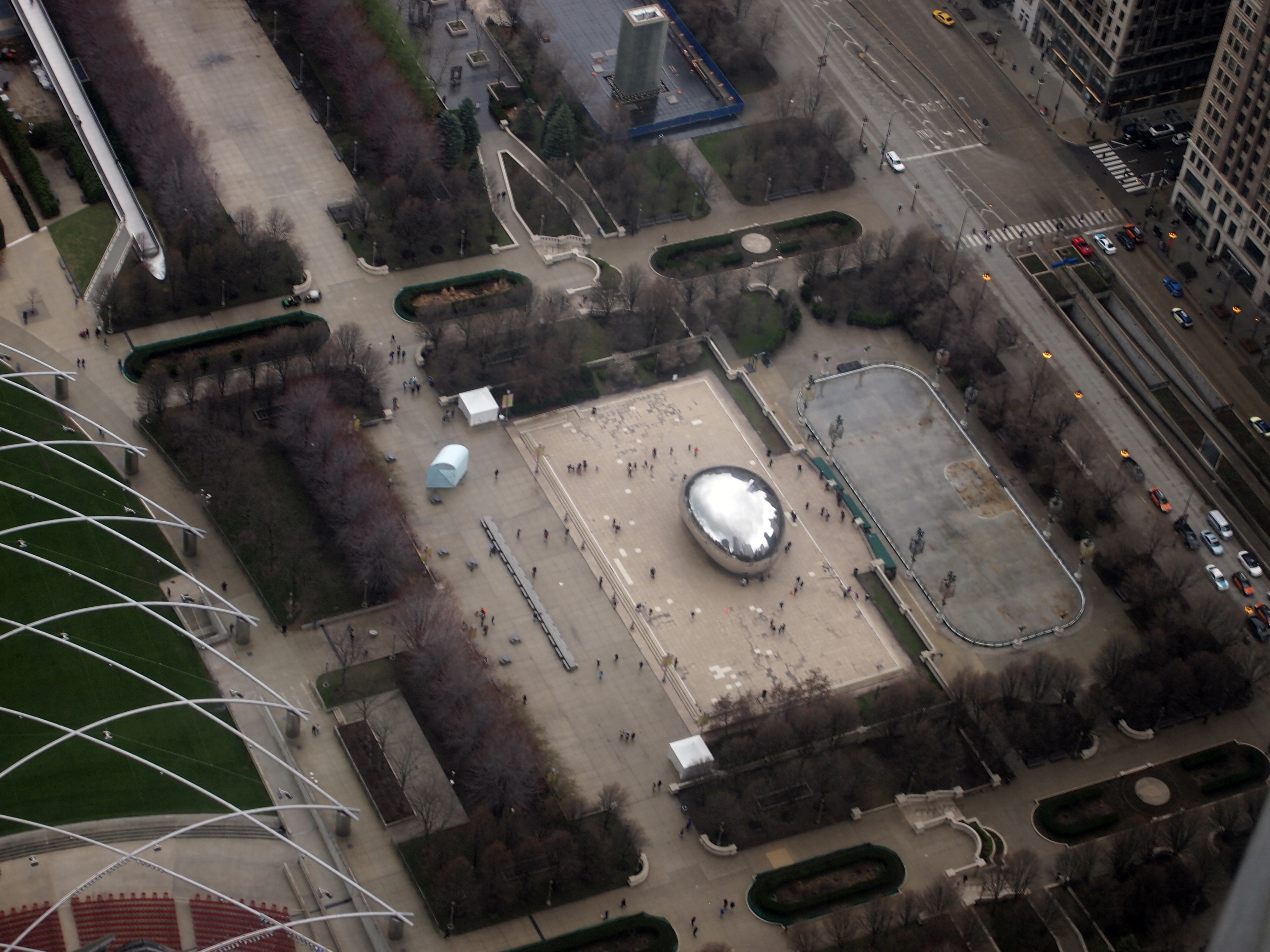There’s a large sand bar between St. Louis Bay and Lake Superior that runs a long way southeast from downtown Duluth, and east of the city of Superior, Wis. Only seven miles southeast from Duluth does the bay finally meet Lake Superior via a natural channel.
Once Duluth was a going concern, its city fathers decided that that arrangement would never do, since it slowed shipping down, the only thing that made Duluth a going concern in the first place. So the city dug the Duluth Ship Canal through the spit in the early 1870s, opening up St. Louis Bay to Lake Superior, conveniently at the city’s waterfront.
Eventually, a bridge across the canal was deemed necessary too. So what we now call the Aerial Lift Bridge opened for traffic in 1905. It’s an impressive work of steel from a distance.
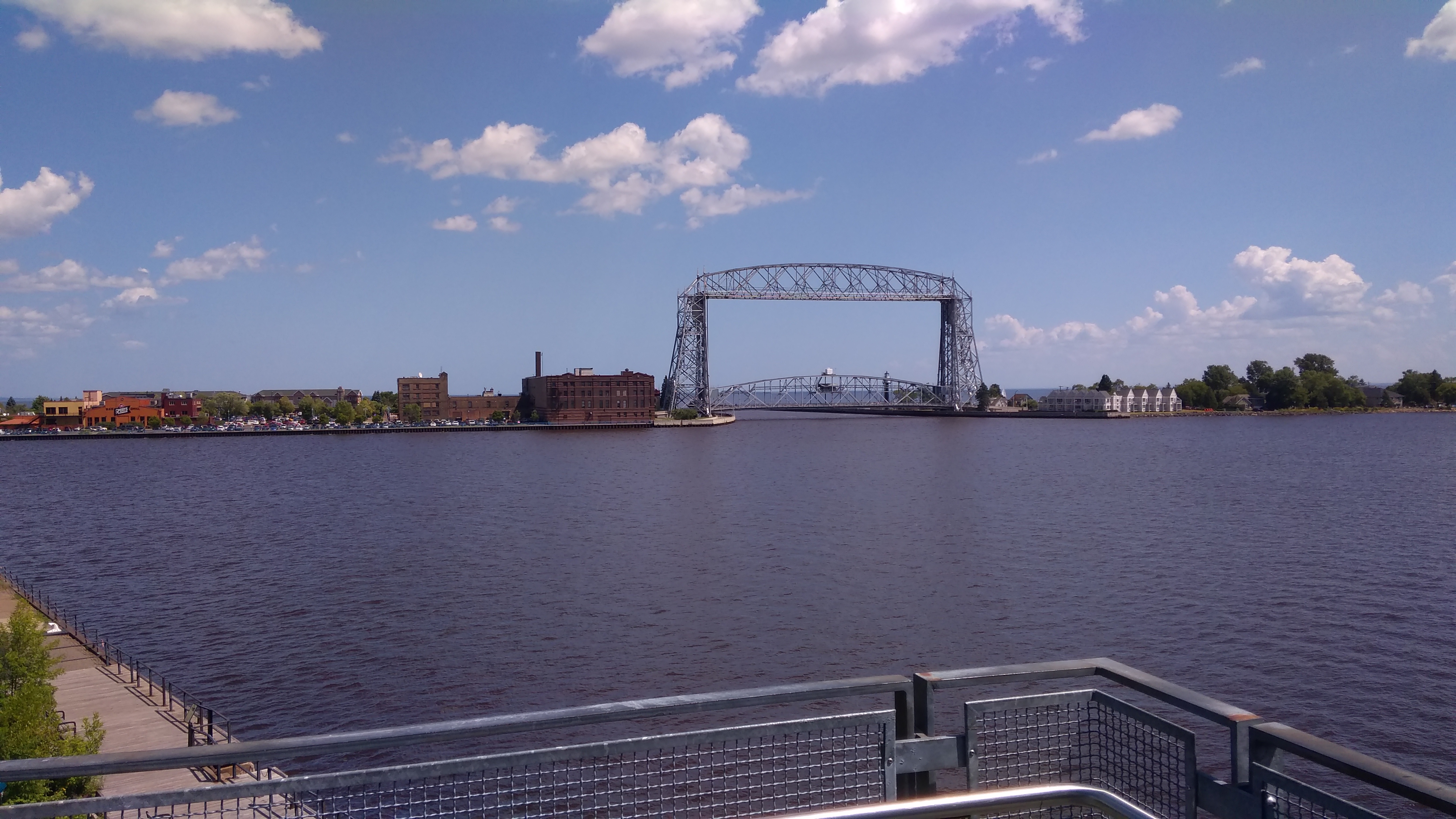 As well as from closer up.
As well as from closer up.
Even more, standing underneath one of its tall towers. Definitely a grand relic of the Machine Age.
The lower level of the bridge is a roadway. When ships need to pass under the bridge, the lower level is raised about 135 feet, after traffic has cleared off, of course. We stood below and watched the process. This is the lower level before rising.
This is the lower level in its raised position.
When the Aerial Lift Bridge was built, it was an oddity known as a transporter bridge. Instead of raising the road, passengers and vehicles crossed in what were essentially large gondolas. That was impractical in the long run, so by 1930 the bridge had been converted into its current form.
There’s some tourist infrastructure in the shadow of the bridge. Warehouses and other old buildings have been redeveloped in recent years into a retail-restaurant-attraction district known as Canal Park, which is north of the bridge and adjacent to downtown Duluth. Reminded me some of Navy Pier in Chicago, though Canal Park is shorter and not as crowded.
We took a walk out to one of the lighthouses at the end of the canal, the Duluth North Pier Lighthouse.
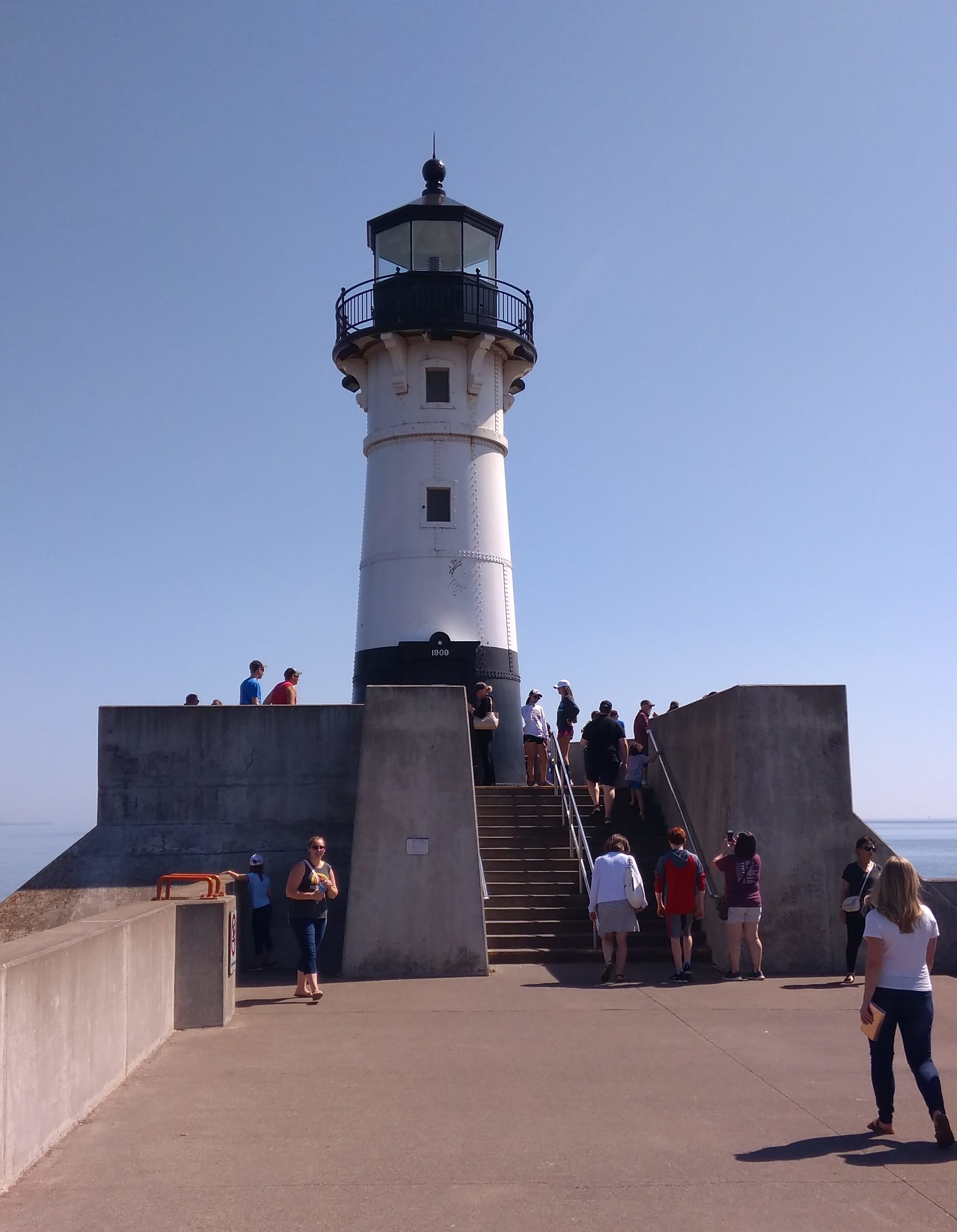
At water’s edge near the canal, we watched a remarkably skilled stone-skipper, a kid of maybe 12. He was skipping stones across the water six or seven or eight or more times that I could count, one stone after another after another. Here he is, in black, looking for more stones.
The kid had the wrist action for it. If there’s such a thing as pro stone-skipping — and for all I know, there is, since we live in a world where people are pro video gamers — I bet he could go pro.
